SOLAR FORECASTING by predicting cloud behaviour
The clusters powering Australia’s hydrogen future

FIVE WAYS ENERGY TECHNOLOGY will change in the next decade
ISSUE 13 · March 2021 · www.energymagazine.com.au

“Run with us – Your partner in Plastics”

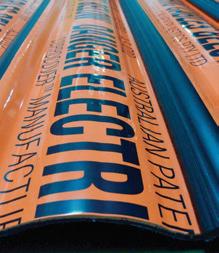




All Australian Supplied Electrical Cable Cover is manufactured in accordance with AS4702-2000 and is independently tested, by TUV Rheinland Australia
Unique rounded edging of the Cable Cover ensures maximum installer safety and reduces the risk of injury
100% Recycled Plastic
Notched Pallet allows web hoist to be safely fed through the coil and ensure safe offloading of larger coils
Gas Protection Covers available in a range of sizes
The Corrugated Cable Cover, is a patented product, manufactured under License
Thicknesses range from 3mm to 10mm, Widths available from 100mm up to 600mm
Standard Slab Length available in 1.2, and 2.1 Metre
Standard Coil Lengths are 10 Metre, 15 Metre, 20 Metre, 25 Metre and 150 Metre
Both Plastics Extrusions Thailand, and AGC Plastics, are 100% Australian owned and ISO accredited Companies
The product is continuously checked during the production cycle to ensure the surface finish, size, weight and impact strength are to the required specification
In-Line Printing allows for product batch and manufacture date for identification and tracing
Maintain strict control over all our procedures so as to maintain the highest quality of both product, and service to our customers

+61 432006775 rory@agcplastics.com.au
for further information.
Contact Rory Livingston AGC Plastics Pty Ltd 38 Sarton Road, Clayton Victoria, 3168 Australia www.agcplastics.com.au AGC Plastics has a number of quality distributors in Australia, as well as internationally. Please contact us
CABLE COVER
AS4702-2000 ELECTRICAL


F: (03) 8456 6720
monkeymedia.com.au
info@monkeymedia.com.au
energymagazine.com.au
info@energymagazine.com.au
Anew year brings the chance to start afresh and look at exciting new possibilities, and from where I sit, the energy industry has embraced this opportunity enthusiastically.
After the challenges that were thrown our way in 2020, both professionally and personally, it’s great to see that the industry has started 2021 by focusing on the things that we can do to make energy supply and delivery better for customers.
The role hydrogen will play in the years ahead remains the topic of most interest to our readers, and there have been a number of significant milestones in this space. Most notable perhaps is the role National Energy Resources Australia will play by establishing a $1.85 million network of hydrogen technology clusters to foster the connection and collaboration that will be required for this sector to take off. Like many of you, I can’t wait to see the developments that unfold from this national network.
And while hydrogen is a hot topic in the industry, the role natural gas will play
in our energy future is also being hotly debated. On the one hand, we have Prime Minister Scott Morrison spruiking the benefits of a gas-fired recovery from the economic impact from COVID-19; and on the other, Tony Wood from the Grattan Institute argues that not only is this position incompatible with our emissions targets, it also just doesn’t make financial sense. And then we have Western Australia, where the gas is plentiful and set to supply the state and international export partners with gas for many years to come.
We’ve explored all of these perspectives in this issue of Energy, and while I don’t have a crystal ball, I suspect we’ll ultimately see a gradual approach to the gas transition, with gas still playing a role for a while to come; and with hydrogen making steady advances and inroads into our consumption.
As always, I’m keen to hear your thoughts on this topic – drop me a line at the address below to share your thoughts on this, and any of the other issues we’ve covered in this issue of Energy
1
Laura Harvey Editor ISSUE 13—MARCH 2021 WELCOME
www.energymagazine.com.au NOUS CB5834 (REQUESTED EARLY RIGHT HAND SIDE) SOLAR FORECASTING by predicting cloud behaviour FIVE WAYS ENERGY TECHNOLOGY will change in the next decade The clusters powering Australia’s hydrogen future
The
1, 36–38
EDITOR’S WELCOME
Monkey Media Enterprises ABN: 36 426 734 954 C/-
Commons, Office
Gipps St, Collingwood VIC 3066
P: (03) 9988 4950
by We’re keen to hear your thoughts and feedback on this issue of Energy. Get in touch at info@energymagazine.com.au or feel free to give us a call on (03) 9988 4950. March 2021 ISSUE 13 Editor
Editors
Editor
Manager
ISSN: 2209-0541 Published
Laura Harvey Assistant
Eliza Booth Imogen Hartmann Contributing
Michelle Goldsmith Design
Alejandro Molano Designers
Jacqueline Buckmaster Danielle Harris National Media and Events Executives
Publisher
Rima Munafo Brett Thompson Marketing Associate Radhika Sud Marketing Assistant Stephanie Di Paola
Chris Bland Cover image highlights the work currently being done by Solcast and AEMO to improve our ability to forecast the impact of cloud cover on solar supply to the grid.






2 SOLAR AND STORAGE 22 Five ways Australia’s energy technology will change in the next decade 24 The first step before you build solar or wind 26 Boost your solar output by 30 per cent 28 The future of solar battery technology SOLAR AND STORAGE 10 Economics prove renewables are the future of energy generation 14 WA trials broaden horizon for microgrids 16 Cloud computing: renewable forecasting by predicting cloud behaviour 20 Where is bioenergy in the renewable energy conversation? 22 10 HYDROGEN AND FUTURE FUELS 30 Powering Australia’s hydrogen future 34 Why hydrogen is the better battery 30 NEWS 4 AGL reveals big battery project suppliers 5 WA awards stand-alone power system contracts 5 $10 million Victorian hydrogen hub 6 New leadership at AEMO 7 Electricity prices to drop, report says 8 World’s biggest battery bound for NSW 9 Mega energy class action against QLD generators EACH ISSUE 1 EDITOR'S WELCOME 64 FEATURES SCHEDULE 64 ADVERTISERS’ INDEX CONTENTS March 2021 ISSUE 13 www.energymagazine.com.au




































CONTENTS 3 INDUSTRY INSIGHT
Gone with the wind: how wind power has affected electricity prices and volatility 56 CONSUMER AND INDUSTRIAL RETAIL
Virtual PPAs: the future for energy trading DOMESTIC GAS OUTLOOK
Dousing the flame: why natural gas isn’t the economy-saving solution Australia needs
Connecting the dots: bringing gas to market
Highs and lows: Western Australia’s ten-year gas outlook 40
ENERGY
Sowing the seeds to reap smart meter rewards
Time is running out to salvage Australia’s EV future 52 PROJECT SOLUTIONS
Managing communications on a remote site
Mobile contact voltage solution quickly identifies hazardous condition in schoolyard 36 60 www.energymagazine.com.au March 2021 ISSUE 13
56
60
40
44
48
SMART
52
54
36
38
AGL REVEALS BIG BATTERY PROJECT SUPPLIERS
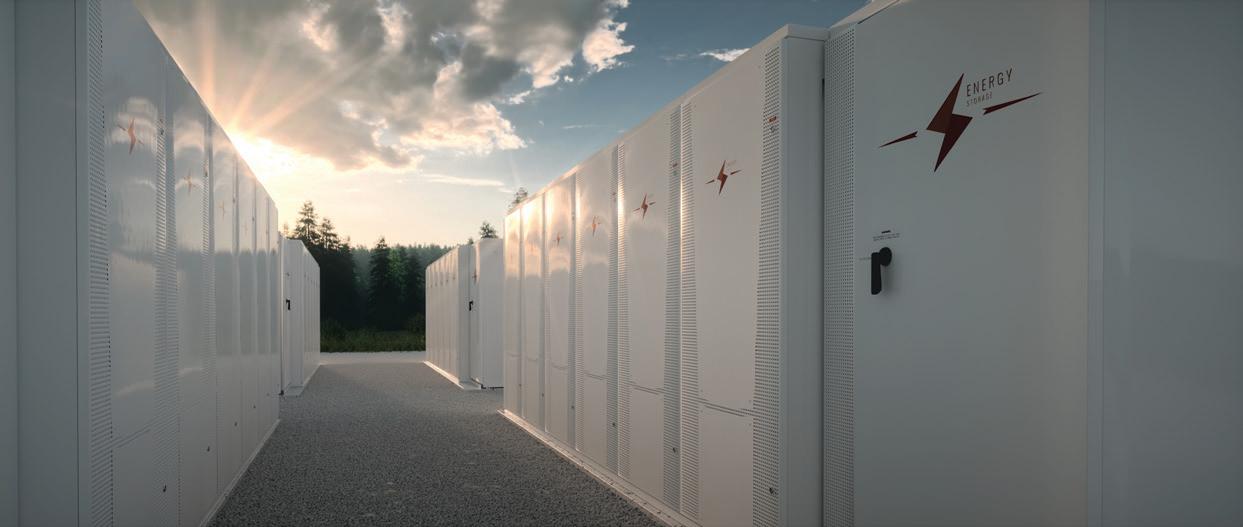
Two energy storage technology companies have been chosen by AGL to supply approximately 1,000MW of grid-scale battery storage under nonexclusive framework agreements.
AGL Chief Operating Officer, Markus Brokhof, said Wärtsilä and Fluence were chosen through a competitive tender process for their capability, experience and pricing as well as their alignment with AGL’s values and strategic objectives.
“This framework agreement is another example of AGL getting on with the business of energy transition and will enable delivery against our commitment to build 850MW of grid-scale battery storage by FY2024,” Mr Brokhof said.
“Wärtsilä and Fluence are both global leaders in energy storage technologies, ensuring we are investing in the highest standards for performance, reliability and safety.
“We are already well advanced with our planning process and these framework agreements will reduce tender timeframes for individual projects, enabling faster project schedules and commercial operation.
“We’re excited to see our grid-scale battery plans begin to come to life; we know energy storage technology is critical in creating cleaner and smarter distributed energy infrastructure.
“Our grid-scale battery plans provide critical firming capacity to the market and will play a leading role in the energy industry’s transition over the coming decades.”
In 2020, AGL announced plans to build batteries at Loy Yang A Power Station in Victoria (200MW), Liddell Power Station (150MW) and Broken Hill (50MW) in NSW, and Torrens Island (250MW) in South Australia.
Mr Brokhof said AGL has been Australia’s largest private investor in renewables and is now leading in the development of storage technology such as batteries, ranging in size from grid scale to residential.
“Grid-scale batteries allow AGL to leverage excess solar and wind generation to provide capacity when renewable sources are not generating,” Mr Brokhof said.
“These plans are part of the commitments made in our Climate Statement which targets net zero emissions by 2050.”
Wärtsilä Energy Sales Director, Suraj Narayan, said he was delighted that AGL had selected Wärtsilä as one of the suppliers for the projects under its grid-scale battery plans.
“AGL is a valued customer for Wärtsilä and we look forward to providing our smart technology solutions to support AGL’s plans for critical firming capacity that will play a leading role in the energy transition from coal to renewables,” Mr Narayan said.
Fluence Vice President of Global Markets, Jan Teichmann, said AGL is leading the way, taking battery-based energy storage in Australia to the next level to deliver large-scale flexibility that is critical to support the National Electricity Market.
“Australia’s grid is evolving quickly, and batteries can fill critical gaps left by coal and gas retirements, both as the super-fast services needed to strengthen the grid and as a source of peak power,” Mr Teichmann said.
“As a pioneer of the technology, Fluence’s team has seen the demand for energy storage grow to where we are now regularly contracting and deploying both 100+ MW storage solutions and portfolios of storage assets on grids around the world.”
NEWS 4 March 2021 ISSUE 13 www.energymagazine.com.au
WA AWARDS STAND ALONE POWER SYSTEM CONTRACTS
The Western Australian Government has awarded $17 million worth of contracts under a program to roll out 98 stand alone power systems (SPS) across WA’s network – the largest single rollout of its kind in Australia.
The units will provide a more reliable, greener power supply to residents across the South West Interconnected System at locations including Kalbarri, Three Springs, Merredin, Jerramungup and Rocky Gully.
The successful WA contractors are: Hybrid Systems, BayWa r.e. Solar Systems, Balance Utility Solutions and AGL Energy Services, who are working with Bunbury subcontractor Positive Off-Grid Solutions.
An SPS is a more efficient option than traditional poles and wires in supplying electricity to regional households and businesses. The units typically include solar panels, a battery and, where required, a back up generator.
The 98 units will replace around 330km of overhead powerlines, which would have needed to be replaced at a significant cost. They will also improve land amenity for farmers and reduce bushfire risk.
WA Energy Minister, Bill Johnston, said, “Through the McGowan Government’s Energy Transformation Strategy, we’re revolutionising the way we deliver and provide energy to Western Australian homes.
“Stand alone power systems are an excellent alternative for regional customers and while they’re part of Western Power’s service area, they operate independently to the main grid.
“The increased rollout of SPS is creating new jobs and training opportunities for Western Australians.
“These new contracts will create jobs for Western Australians and support small businesses during the manufacture, installation and commissioning phases.”
$10 MILLION VICTORIAN HYDROGEN HUB
The Victorian Government has announced a new $10 million hydrogen hub in Melbourne’s south east, set to create hundreds of jobs and help develop new clean energy technologies.
The Swinburne University of Technology Victorian Hydrogen Hub (VH2) will be a major national precinct to explore new hydrogen technologies, including clean energy vehicles and hydrogen storage containers.
The hub will provide opportunities to students, researchers and industry, and be a place where the community can learn about hydrogen as a sustainable energy source.
Victorian Minister for Higher Education, Gayle Tierney, and Minister for Energy, Environment and Climate Change, Lily D’Ambrosio, said the facility would stimulate Australia’s hydrogen sector and establish Victoria as a leader in developing clean, more efficient and reliable energy sources.
“We are proud to be investing in this innovative project that will drive the state’s COVID-19 recovery – by giving Victorians more opportunities to learn and find pathways into meaningful careers,” Ms Tierney said.
VH2 will create about 300 new full-time jobs, with half its PhD and Masters scholarships to be awarded to women to boost female participation in the sector.
“This hub will help give Victorians the skills and experience we need to unlock the hydrogen industry – driving down emissions while creating green jobs in a growing industry,” Ms D’Ambrosio said.
Construction will begin in early 2022 and take about 18 months, with a twin facility slated for Stuttgart in Germany, fostering an Australian-first international hydrogen development partnership.
VH2 is a key component of the Victorian Government’s Renewable Hydrogen Industry Development Plan, which was released in February and sets the framework for building a thriving hydrogen economy over the next decade.
Swinburne University Vice-Chancellor, Professor Pascale Quester, said, “We’re grateful to the Victorian Government and our partners for their support as we work for advancements in hydrogen technology and focus on wider technological advancements for Victoria, Australia and the world.”
Fuelling hydrogen partnerships
This project was funded through the $350 million Victorian Higher Education State Investment Fund which is supporting universities with capital works, research infrastructure projects and applied research focused on boosting Victoria’s productivity and economy as the state recovers from the pandemic.

The funding enables CSIRO to partner with Swinburne University of Technology to support the VH2. Under the partnership, CSIRO will receive more than $1 million towards the development of a refuelling station to fuel and test hydrogen vehicles.
The refuelling station, to be located at CSIRO’s Clayton campus in Victoria, is a key milestone in the development of CSIRO’s national Hydrogen Industry Mission, which aims to support Australia’s clean hydrogen industry – estimated to create more than 8,000 jobs, generate $11 billion a year in GDP and support a low emissions future.
CSIRO Executive Director, Growth, Nigel Warren, said, “As Australia considers energy alternatives, we know hydrogen is clean and will be cost-competitive – but a major barrier to it becoming a fuel source for cars and trucks is how to refuel, and the lack of refuelling infrastructure.
“The refueller is a significant step towards removing that barrier.”
The refueller project will demonstrate a fleet trial for CSIRO hydrogen vehicles with the potential for expansion, providing refuelling opportunities to other zero emission Fuel Cell Electric Vehicles (FCEVs) in the local area.
CSIRO is engaging with vehicle companies such as Toyota Australia to support the future adoption and supply of FCEVs in Australia.
Toyota Australia’s Manager of Future Technologies, Matt MacLeod, said, “Toyota Australia is delighted to support the development of this new hydrogen refuelling station in Victoria with next-generation Mirai FCEVs.
“This is a significant step towards having the necessary refuelling infrastructure to help grow hydrogen opportunities in Australia.
“We look forward to working closely with CSIRO and their partners on this exciting project.”
5 NEWS www.energymagazine.com.au March 2021 ISSUE 13
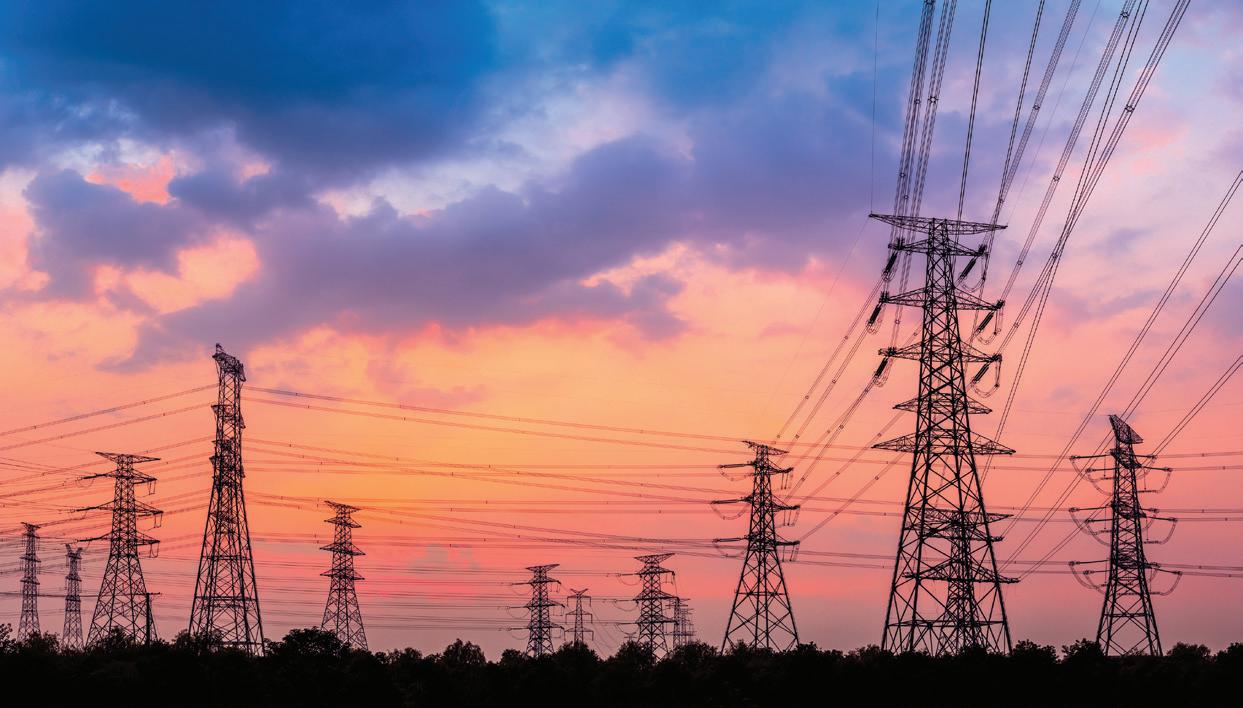
NEW LEADERSHIP AT AEMO
Anew CEO and Managing Director has been appointed to Australian Energy Market Operator’s (AEMO) Board.
Daniel Westerman has been appointed to the position, commencing 17 May 2021.
Mr Westerman joins AEMO from National Grid, a leading London-listed international electricity and gas utility, where he has held a variety of senior executive roles since 2014, and currently serves as Chief Transformation Officer and President of Renewable Energy.
Mr Westerman is a chartered engineer and an experienced business leader with significant breadth in the energy sector.
At National Grid, Mr Westerman has been responsible for engineering, planning and operational control of the electricity transmission network across Great Britain, as well as the development of distributed energy systems such as rooftop solar, storage and energy metering.
Most recently, Mr Westerman has grown a large-scale renewable energy business and led transformation and change programs across multiple business units and geographies.
Mr Westerman also brings significant commercial and regulatory experience in both the UK and several US electricity markets.
AEMO Chairman, Drew Clarke, said the board was pleased the CEO search process attracted strong interest from high-calibre energy leaders both within Australia and globally.
“Daniel was selected from a strong field of leaders in the energy sector, and the board is confident his experience positions him well to lead AEMO through the next phase of transition in the energy sector,” Mr Clarke said.
“Experience in a commercial setting was highly valued in AEMO’s search, and the board was pleased to secure a candidate with experience leading major infrastructure projects through the investment cycle.”
Mr Westerman said he was delighted to return to Australia and lead AEMO at a time when electricity and gas systems nationally and globally are undergoing rapid transition.
“I’m looking forward to collaborating with market participants, policymakers and stakeholders across the energy industry to help inform and shape the best outcomes for consumers as the technology mix undergoes a dramatic transformation,” Mr Westerman said.
“Australia is leading the world in the adoption of renewable energy systems, and AEMO plays a critical role in maintaining a stable supply of power to the millions of homes and businesses that benefit from the energy these systems provide.
“As our economy recovers from the impacts of the pandemic, the gas markets operated by AEMO will continue to play an important role in both the export and domestic energy sectors.
“AEMO must continue to operate our energy systems today while planning for the challenges of tomorrow, and that will be my focus.”
Mr Clarke also thanked AEMO’s acting CEO, Nino Ficca, for his stewardship of the organisation since the departure of former CEO, Audrey Zibelman, in December 2020.
“Under Nino’s guidance, the important work of AEMO will continue smoothly across the summer and autumn, and the board looks forward to Nino returning to his role of non-executive director upon Daniel’s commencement,” Mr Clarke said.
NEWS 6 March 2021 ISSUE 13 www.energymagazine.com.au
ELECTRICITY PRICES TO DROP, REPORT SAYS
The Australian Energy Market Commission (AEMC) has released its 2020 Residential Electricity Price Trends Report, forecasting a continuous decline in electricity prices in the coming years.
The AEMC’s report forecasts that, on average, residential electricity prices will fall by 8.7 per cent to 2022-23, saving households more than $100 annually.
Reductions are forecast across the entire National Electricity Market (NEM), with a drop of more than $200 expected for households in South Australia
Falling wholesale costs are the primary driver of the price and bill reductions, with the AEMC predicting that wholesale costs will drop by more than $150 (27.4 per cent) during the period.
With wholesale prices making up around a third of retail energy bills, the Federal Government said it expects that those lower prices will be passed on to Australian families and small businesses.
The forecasted lower prices come on the heels of ongoing policy action from the Federal Government to lower energy costs and improve outcomes for families and small businesses, which has seen wholesale prices falling for each of the last 15 months, and seven consecutive quarters of year-on-year retail price reductions.
Minister for Energy and Emissions Reduction, Angus Taylor, said lower costs were good for the economy and consumers as Australia emerges from the COVID-19 pandemic.
“Cheaper electricity puts more money in the pockets of hardworking Australians,” Mr Taylor said.
“After what has been a tough year for everyone, news that electricity prices are expected to continue falling in 2021 is a welcome relief.

“The Government is constantly working to help Australians pay less for their energy bills and this report confirms that our actions are having an impact.
“Electricity prices should not hold households and small businesses back, which is why our Government will continue to work hard to keep prices down and the lights on.”
Even though prices are forecast to fall over the next three years, the AEMC predicts a slight increase in prices and bills in 2022-23, which it attributes to the closure of the Liddell Power Station.
The Federal Government said it was protecting families and businesses against the risk of price rises with its outlined expectations of the electricity sector to deliver 1,000MW of new dispatchable energy before Liddell closes in 2023.
“The Government is on the side of consumers,” Mr Taylor said.
“We are taking strong action to ensure Australians are paying less to keep lights on.”




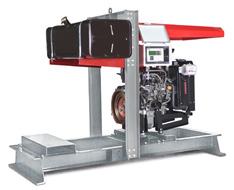

7 NEWS www.energymagazine.com.au March 2021 ISSUE 13
WORLD’S BIGGEST BATTERY BOUND FOR NSW
CEP.Energy is set to build the largest proposed gridscale battery in the world, under a new 30-year lease agreement with the Hunter Investment Corporation.
The proposed battery will have up to 1,200MW total capacity and will be based within the Hunter Economic Zone (HEZ) precinct at Kurri Kurri.
The NSW battery would be the largest asset in CEP’s planned network of four grid-scale batteries across the country, with total capacity up to 2000MW.
Peter Wright, CEO of CEP, said the business is on track to become the largest battery storage asset owner in the Australian energy market.
“CEP’s grid-scale battery network is part of our dual-track strategy to generate and store clean, reliable and cost-effective electricity for Australian businesses, and make excess power available to the national grid to firm up the increase in renewable generation,” Mr Wright said.
“To achieve this, we have secured strategic locations with excellent access to existing network connection infrastructure.
“We have also assembled a senior management team with outstanding credentials in national energy system design and management.
“The HEZ site is zoned for heavy industrial use, pre-approved for power generation and located adjacent to existing substations.
“It is among the best handful of sites in Australia for reliable and efficient grid connection.”
Mr Wright said the Hunter battery is proposed to be developed in stages. An expression of interest process to select a battery provider will soon be issued.
Commencement of construction of CEP’s NSW big battery is planned for the first quarter of 2022, while the target timeframe for commencement of operations is 2023.
Morris Iemma, Chairman of CEP, said integrated grid-scale battery networks are accelerating Australia’s transition to a clean energy future.

“Big batteries, including the one planned by CEP for the Hunter, will play a major role in filling the gaps left by the gradual retirement of coal and gas-fired generation assets, including the nearby Liddell Power Station,” Mr Iemma said.
“The clean energy roadmap laid out by the NSW Government has provided the market with the confidence to invest in renewable generation supported by large battery storage.
“This project will help ensure the Hunter region of NSW remains true to its heritage as one of the nation’s energy powerhouses as we work towards a cleaner, decarbonised future.”
The Energy Security Board Post 2025 Market Design Directions Paper, released in January 2021, states:
Over the next two decades 26-50GW of new, large-scale variable renewable energy – in addition to existing, committed and anticipated projects – is forecast to come online
This will be supported by between 6GW and 19GW of new flexible and dispatchable resources as approximately 16GW of thermal generation retires
Mark Stedwell, CEP’s Chief Strategy Advisor and previously GM Real Time Operations and Systems Capability at the Australian Energy Market Operator, said, “Reliable battery storage will provide contingency supply to enable greater levels of variable renewable generation to penetrate the Australian energy market moving forward.
“There is clearly scope for more big battery projects that stack up in terms of location and a sustainable business model.”
CEP’s grid-scale battery network will be progressed concurrently with its development of an aggregated Virtual Power Plant (VPP) comprising 1,500MW of industrial rooftop solar generation supported by up to 400MW of battery storage over the next five years.
The rooftop VPP strategy is aimed at stimulating new jobs and economic activity in major manufacturing and commercial hubs in Australia by reducing operating costs for energy-intensive businesses.
NEWS 8 March 2021 ISSUE 13 www.energymagazine.com.au

MEGA ENERGY CLASS ACTION AGAINST QLD GENERATORS
Law firm Piper Alderman has filed the nation’s largest energy class action suit, on behalf of over 50,730 electricity customers, in the Federal Court of Australia against two Queensland state-owned electricity generators.
The QLD Energy Class Action is a legal claim being brought against electricity generators Stanwell and CS Energy for allegedly manipulating the electricity pricing system and artificially inflating consumers’ electricity bills.
The class action was initiated on 18 June 2020 by Piper Alderman and is funded by LCM (an Australian litigation funder). The action is brought on behalf of anyone who paid for electricity in Queensland at any point from 20 January 2015 to 20 January 2021 and who has registered to participate.
The majority of registrants are residential energy customers. However, there are also over 1,600 businesses registered. These comprise ASX-listed companies, industrial users of electricity and SMEs.
The claim filed is seeking damages on behalf of registered participants only, however, Piper Alderman has indicated that it will apply to join new registrants to the action providing a final opportunity for electricity consumers to join the action if they wish.
As a litigation funder is covering the legal costs, it does not cost anything to join the action. The QLD Energy Class Action is based on a no win, no fee basis.
Greg Whyte, head of Piper Alderman’s Dispute Resolution and Litigation team in Brisbane, said, “There is a lot of complexity in electricity generation and power prices.
“Our team has spent over two years investigating Stanwell and CS Energy’s unlawful conduct.
“The unlawful conduct occurred at the generation stage, and your retailer simply passed that cost through to consumers.
“This is why this action is available to all Queensland businesses and residents.
“The facts indicate, and we will seek to prove, that the defendants manipulated the wholesale cost of electricity for their own profit. It amounts to a hidden tax paid by Queenslanders.
“We brought this action on behalf of Queensland-based businesses and households who have all been affected. The conduct of Stanwell and CS Energy has had a devastating effect on the Queensland economy.
“Queenslanders who paid for electricity between January 2015 and January 2021 are invited to visit www.QLDEnergyClassAction.com.au to register for the action. I encourage them all to join.”
In a media release, Stanwell said, “The proposed class action is opportunistic and entrepreneurial, funded by an international litigation funder that treats class actions as a means of generating profits.
“Stanwell strongly rejects Piper Alderman’s allegations and will vigorously defend the allegations in the courts.
“At no stage has the Australian Energy Regulator found Stanwell misused its market power or breached market rules.
“Many of the allegations being made by Piper Alderman quote a 2016 report by the Grattan Institute.
“The Australian Energy Market Commission – which makes the rules for the National Electricity Market – has reviewed the Grattan Institute’s 2016 report and dismissed many of the claims contained in it, including key allegations which Piper Alderman is levelling against Stanwell.
“Queensland taxpayers would bear the costs of defending this class action because it will reduce the dividends which Stanwell can deliver to help fund vital health, education and police services.”
9 NEWS www.energymagazine.com.au March 2021 ISSUE 13

ECONOMICS PROVE RENEWABLES ARE THE
FUTURE OF ENERGY GENERATION
by Eliza Booth, Assistant Editor, Energy Magazine
SOLAR AND STORAGE 10 March 2021 ISSUE 13 www.energymagazine.com.au

There’s no doubt that renewable energy is the way of the future, but often the cost of transitioning to clean energy sources presents a major roadblock for uptake of renewables. Now, a new report from CSIRO and AEMO has found unequivocally that renewables, like wind and solar, are the cheapest new sources of electricity generation in Australia – a third cheaper than previously estimated – and will remain the cheapest option for the foreseeable future.
To learn more about the report’s findings, Energy Magazine talked with Paul Graham, Chief Economist at CSIRO's Energy business unit, and co-author of the GenCost 2020-21: Consultation draft, about the new report’s most critical findings and what it means for the future of energy generation and renewables in Australia.
The rise of variable renewables
In December 2020, CSIRO released the GenCost 2020-21: Consultation draft, the third such report since beginning in 2018, undertaken in collaboration with the Australian Energy Market Operator (AEMO). The aim of the report is to provide current and updated capital cost estimates of different types of electricity generation technologies and storage options in Australia. GenCost also plays a major role in the future of the energy industry as the modelling provides a roadmap for industry, councils and government to reference.
This year’s GenCost report was particularly interesting, with new and updated modelling showing that renewables like wind and solar currently are, and will remain for the foreseeable future, the cheapest form of electricity generation.
Mr Graham said that the new GenCost report focused on factoring in the additional costs that often come with the integration of variable renewables like storage and transmission, with the results showing that variable renewables will remain the most cost-effective form of electricity generation, even with the added cost of storage and transmission factored in.
“We’ve reported in the past that renewables were looking very low cost, but this is the first time we’ve more accurately calculated the cost of all the additional integration costs that come with variable renewables,” Mr Graham told Energy magazine.
“As we know, variable renewables only provide power when the sun’s shining or the wind’s blowing. So it’s always been a concern for everyone in the electricity sector, how would we proceed with using that as our main source of supply, because you have to back them up.”
In order for variable renewable energy to work seamlessly, storage and transmission of the generated electricity is a major
consideration. Mr Graham said that current transmission methods are designed primarily to take energy from coal fields to city centres and are not optimised for variable renewables to be integrated. In addition, storage is another major consideration when it comes to renewable uptake. There needs to be adequate storage facilities to ensure that there is enough energy supply to keep the grid running smoothly during peaks and troughs.
“What you generally find is that the more variable renewables you add, the more storage you have to add. It actually increases non-linearly. So that’s another big cost. So initially transmission is the main cost, but as you get towards 70, 80, 90 per cent variable renewable, storage is overwhelmingly the largest cost associated with renewables,” Mr Graham said.
In earlier reports, Mr Graham said that they tried to include these kinds of costings, however the calculations were much more simplified at the time. Originally they added one piece of storage equipment for every solar and wind farm that was deployed, however, this year’s report found that this was causing drastic over-estimates as that much storage is not needed.
“It turns out, that was overkill. You don’t need that much storage,” Mr Graham said.
“That was adding upwards of nearly $100 a megawatt hour to the cost of a solar or wind farm. Now that we’ve got the more accurate estimate, it’s only adding up to about $30 a megawatt hour. So it was nearly triple the cost that we previously expected.”
Mr Graham said that this time the GenCost report also included transmission cost estimates, which helped to give more accurate results.
“Previously, we were just looking at storage, and this time we included transmission. The thing about transmission is we’ll always need to add that, no matter what scale of variable renewables we’re going for. So it is an important factor, and that’s all based on inputs that AEMO has developed for their integrated system planning. We’re using all their transmission costs, so that we’re consistent with common views about what transmission will cost in the future.”
This comes as incredibly exciting news for the energy industry and for the uptake of variable renewables. The fact that current and accurate estimates
SOLAR AND STORAGE 11 www.energymagazine.com.au March 2021 ISSUE 13

from the GenCost report find that the cost of variable renewables are a third less expensive as previously estimated, even with the inclusion of storage and transmission costs, means that more companies, councils and governments will be incentivised to invest in, and transfer to, variable renewable generation.
Modular technology and hydrogen potential
While variable renewables are projected to be the most cost-effective form of energy generation for the future, there’s also good news for modular technologies becoming more affordable and accessible. The new GenCost report found that modular technologies such as solar PV and batteries will continue to experience the fastest rates of reduction of costs thanks to the faster turnover rate of producing these technologies compared to other technologies such as carbon capture and storage (CSS), which have much longer turnover rates
Mr Graham said that technologies that are repeatable, like solar cells that are used on roofs, at large scale and in electronics, as well as batteries, which are used in services like personal electronics, large-scale projects and electric vehicles, are best placed to take advantage of technological advances and improvements.
“There’s something about these technologies that you can produce modularly, because you’d get the turnover rate of producing them much faster,” Mr Graham said.
“Compare that to a coal CCS plant, you do it once, and it costs three to five billion. Then you don’t do another one for a while. You can still carry the learnings over but it takes a lot longer, and you just can’t get the rate of turnover to actually build improvements over time. But solar PV and batteries have got that option, and that possibility that manufacturers are able to exploit.
In particularly exciting news, Mr Graham and his team think that this repeatability could probably be seen with hydrogen electrolysers too.
Mr Graham said that electrolysers, which are used to make hydrogen from electricity, are experiencing growth and innovation
similar to solar and batteries have in the past. These cost reductions in modular technologies are also helping to scale up Australia’s hydrogen energy generation potential, which is great news for the Australian Federal Government who is investing in this form of energy as part of its National Hydrogen Strategy¹.
“[Electrolysers] are going through a process where there’s lots of demonstration projects going on around the world, much like there was for solar ten years ago, and like there was for batteries five or seven years ago. So it looks like we’ve got a potentially modular technology that’s starting to scale up. There’s an expectation that we might also be able to get these cost reductions falling for hydrogen electrolysers,” Mr Graham said.
“We’ve noticed in the last two years a huge step up in the interest around hydrogen for clients and partners, including government, university and industry. Everybody wants to look at hydrogen from some sort of angle, whether it’s research or just trying to understand the future possibilities.”
The way forward
Although the findings of the GenCost report are fantastic news for the renewable energy generation sector, it also found that there are still many roadblocks impeding cost reductions for other clean energy technologies like CCS, nuclear, small modular reactors, thermal and ocean energy, and Mr Graham said it all comes down to investment.
“There’s nothing magical about the passage of time that makes those technologies cheaper, the only way they get cheaper is if people invest,” Mr Graham explained.
“From our observation, when you’ve got a technology that’s sitting higher up its learning curve, there hasn’t been too many built, the only way to bring it down is by building them, as demonstration plants or commercial plants. If that doesn’t happen, then they stay stuck.”
Mr Graham said that the best hope for real change and advancement in these technologies is through global cooperation and investment, as has happened with batteries and electric vehicles.
“With a coordinated global approach, the technologies that are lagging behind will be able to catch up, giving more options and opportunities for renewable, clean energy to enter the grid.
Feedback from the industry
Before the GenCost report was released to the public, it was initially shared with key stakeholders to gauge reactions. Mr Graham said that with reports like GenCost, there is generally interest in the updated current costs reported and how these costs are determined.
“The feedback has generally been just wanting to question and understand that we’re getting those costs from the right sources. The sorts of things that people might raise is, ‘Oh, I see you’ve got that price for batteries. I’m seeing a different price. What were your specs?’.”
For the 2020-21 GenCost report, AEMO commissioned engineering consulting and advisory company, Aurecon, to assist with calculating the current costs and utilise its own data to project where these costs might move in the future. This, combined with industry feedback is invaluable to produce the most accurate data possible.
“A lot of the discussion with stakeholders is just trying to find common ground about what we’re actually talking about. One of the difficulties we have, for example, with coal-fired plants and updating their costs is we haven’t built any for quite a while, for more than a decade. So what is the current cost for coal in a country that hasn’t built any? Do we look to China? Do we look to somewhere nearby that’s built something? How do you adjust for engineering costs and exchange rates?,” Mr Graham explained.
Now that the GenCost 2020-21 report has been released to the public for industry and commentator feedback, CSIRO and AEMO are considering the input.
“The feedback is always very useful and we’ll be sure to incorporate any immediate improvements where we can, and where not, build in opportunities in future releases.”
The GenCost 2020-21: Consultation draft is available from the CSIRO website. https://publications.csiro.au/publications/ publication/PIcsiro:EP208181
SOLAR AND STORAGE 12 March 2021 ISSUE 13 www.energymagazine.com.au
https://www.industry.gov.au/policies-and-initiatives/growing-australias-hydrogen-industry
1

WA TRIALS BROADEN HORIZON
FOR MICROGRIDS


Typically, Horizon Power’s portfolio of systems are relatively small and geographically isolated microgrids.
Renewable energy generation is growing to become one of the largest generators on many of these microgrids, which presents increasing risk in the form of renewable energy variability.
The Carnarvon microgrid trials, which started in 2018, work to address these challenges by exploring options to better integrate DERs in regional and remote community microgrids. The intent is to provide data-driven understanding of the impact of weather, particularly cloud events, on the power system and how to leverage visibility and control of DERs to manage the potential of high DER penetration.
Weather impact on solar generation
82 participants with PV systems in Carnarvon in Western Australia took part in the trials. The PV power output on these 82 premises were metered separately to gather data about the true loads that have been masked by PV for over a decade. The use of monitoring devices provided customers with insights, giving them better understanding of energy efficiency and opportunities to manage their power use.
by Monaaf Al-Falahi, Technical Program Coordinator, Energy Networks Australia
Horizon Power is in the final stage of a three-year microgrid trial in Carnarvon, Western Australia. This ground-breaking work aims at better understanding the effects of renewable energy generation and network connected battery systems and explores options for visibility and control of distributed energy resources (DERs). The results are fascinating.
Data collected from these customers’ PV systems was also used to understand the impact of weather on the solar PV generation.
Figure 1 shows the data from the PV systems of the trial participants, which represent about 3MW of PV currently connected to the Carnarvon network. Each colour represents the PV solar system output of one system.
As can be seen, the data shows how the PV generation is impacted significantly by cloud events on a typical cloudy day. These sudden changes in the solar generation negatively impact the network voltage and
hence stability of the grid. To mitigate these impacts, the PV systems’ outputs need to be managed in a way that preserves the stability of the network.
DER control and visibility
The trials installed ten new PV/battery systems and upgraded six existing customer PV systems to include a battery and a Reposit Box. A commercial solar farm also received a partial upgrade so the trials could control a portion of its capacity.
The trials used the Reposit Virtual Power Plant (VPP) platform on these 17 DER systems to learn how to manage the

SOLAR AND STORAGE 14 March 2021 ISSUE 13 www.energymagazine.com.au
Figure 1. The power generated by the trial participants’ PV system in one day
(Source: Horizon Power’s DER Trials and Carnarvon DER Trial).

amount of renewable energy flowing into the network at key times of the day. The aim was to limit the amount of energy exported from managed systems onto the network but not limit the ability of customers to meet their own energy requirements.
The trials have been testing visibility and control of PV and energy storage to explore VPP features that can use DER to assist power quality as well as developing feed-in management techniques that preserve value for customers. They are also testing battery optimisation and innovative tariff models, with methods to exchange value with customers for DER activity that does not pass through the tariff meter. This can include discharging a battery during the peak demand period, which is entirely consumed behind the meter, and therefore remains invisible to the retailer.
Figure 2 demonstrates the hypothetical role of feed-in management in limiting the power exported into the network from PV systems during peak PV generation period. A temporary percentage limit is applied to all feed-in manageable systems to limit the power exported back into the network, therefore preventing reverse power or power quality issues. This can provide network operators with the flexibility to

control the network voltage during peak solar generation periods and provide customers with benefits as they can either charge their batteries (if they have one) or increase their load during feed-in management time.
The Reposit Box was allowed to control the battery charge and discharge and pre-charge the battery before 7:00am if it estimated the solar PV would not provide enough energy to charge for the peak period usage. Once the battery has sufficient charge for the estimated peak period usage, the Reposit Box then discharges it to match demand during the peak period.
Using this approach, the customer’s peak time network load was reduced by 64 per cent, the network average peak load was
reduced by 67 per cent and delivered a customer bill saving of 36 per cent.
It is the combination of smart DER technology and the right pricing signals that Horizon Power hopes can create value for the customer and the network assets.
To date, the trials have enabled Horizon to develop a framework for complex power system analysis as well as working with Murdoch University to develop feed-in management strategies.
The outcomes of the trials will assist in building core competencies in the management of DER via VPPs within a microgrid setting and creating a customercentric approach to DER orchestration.
The final report outlining the results of the trials is expected to be published in the first quarter of 2021.
SOLAR AND STORAGE 15 www.energymagazine.com.au March 2021 ISSUE 13
Figure 2. Power generated from unmanaged PV systems (left) and managed PV systems (right) (Source: Horizon Power DER Trials and Carnarvon DER Trial).
CLOUD COMPUTING : RENEWABLE FORECASTING BY PREDICTING CLOUD BEHAVIOUR
by Michelle Goldsmith, Contributing Editor, Energy Magazine
As the amount of solar and wind generation in electricity networks increases, so does the need for accurate forecasting of the energy provided to the grid. Inaccurate estimates can have severe consequences for renewable energy companies, consumers and power supply. However, advanced weather modelling, which can predict the near-future behaviour of clouds, provides a solution. Energy spoke to Solcast CTO and co-founder, Dr Nick Engerer, about how high-tech cloud watching leads to renewable energy innovation.
When intermittent renewable energy sources, such as solar and wind farms, are integrated into electricity networks, energy operators require accurate forecasts of the energy they will provide to ensure the smooth operation of the grid. Otherwise, weather events like a sudden storm blocking out the sun’s rays may cause an unexpected drop in electricity supply, requiring the deficit to be made up by other power sources. Previously, the models used for these estimates had limited accuracy, sometimes causing large discrepancies between expected and actual supply.

“Large-scale solar and wind farms are subject to penalties from the Frequency Control Ancillary Services (FCAS) market for forecasting error,” said Dr Engerer.
“Historically, they could only use the internal Australian Energy Market Operator (AEMO) models for estimates, respectively ASEFS and AWEFS, which is Australian Solar or Wind Energy Forecasting System. It was identified that site operators were better placed to understand local conditions and forecast output at the site.”
In light of this issue, the renewable energy providers and the AEMO began a process of consultation to develop a solution that would be beneficial to the industry.
SOLAR AND STORAGE 16 March 2021 ISSUE 13 www.energymagazine.com.au
“What that ended up culminating in was some rule changes allowing wind or solar farms to provide their own forecasts for the dispatch interval. So every five minutes they’d provide their own dispatch target, and they could leverage more accurate technologies for solar or wind forecasting. That change was really important for the market.”
Forecasting future weather now
Solcast has been at the helm of a number of key projects to develop and deploy technologies to enable more accurate forecasting. These include the $2.63 million Real-Time Operational PV Simulations project, which received $1.19 million from ARENA and spanned from 2016 to 2019. This project involved deploying advanced modelling to provide low voltage network operators (DNSPs) with high resolution solar energy forecasting data mapped to their electricity networks.
Solar forecasting technology developed by Solcast was used to detect, track and predict the future positions of cloud cover through the use of weather satellites and numerical weather models. The resulting solar radiation forecasts could then be converted to power output predictions.
In 2020, Solcast was awarded $994,000 by ARENA for a $2.91 million Gridded Renewables Nowcasting Demonstration project in South Australia. This project will demonstrate improved ‘nowcasting’

(i.e. five minutes to six hours ahead) using an advanced gridded, rapidly-updating, spatially aware forecast model, providing much more accurate estimates than could be gleaned via existing numerical models that only update a few times a day.
These improved forecasts are shared with the AEMO, the local distribution network operator (SA Power Networks), energy retailers (Snowy Hydro and Energy Australia) and generator asset operators, via project partners, Weatherzone and TESLA Asia Pacific.
“Situational awareness and operational forecasting are critical functions for AEMO as the generation fleet becomes increasingly weather dependent and we continue to observe evolving market trends with the rapid uptake of renewable energy,” said AEMO Chief Operations Officer, Michael Gatt.
“It might be useful to think of it as version one and version two,” said Dr Engerer. “We have deployed version one globally, including across all of Australia. We've done that since 2016 really. But what we're doing in South Australia with the funding from ARENA is working on improving the solar forecasting with version two, where we're modelling how clouds are likely to change over the near term.
“You can think of version one as mapping where clouds are now, identifying their features, and then moving them forward in space and time, but not knowing whether or not they're going to grow or shrink, or change shape in the near future. Clouds do that a lot, particularly during thunderstorms or other weather events.
“Version two is working with other meteorological information to determine whether clouds are likely to get bigger, or to shrink, or to change their shape, and including that in the near-term forecasting.
“There are a few other components, we're also engaging with the short-term wind energy forecasting challenges. We're also trying to engage temperature forecasting, for example. But in this South Australian project, it's strictly limited to the wind and solar components for now.
“Having an additional source of rapidly updating forecasts is helping AEMO identify risks and uncertainty to assist management of the power system in South Australia,” said Mr Gatt.
“One of the biggest challenges this project is helping to develop capability of, is the forecasting of the timing and magnitude of ramping events, such as movement of large cloud banks over South Australia which can quickly impact rooftop solar generation.”
By predicting renewable energy generation in the near-future horizon, including ramping events and periods of suppressed generation, the technology enables operators to proactively manage voltage fluctuations, overcoming one of the key challenges that may otherwise limit renewable energy penetration in electricity networks. The results coming in from the SA nowcasting project demonstrate the advanced forecasting model’s ability to predict previously unforeseeable weather events.
SOLAR AND STORAGE 17 www.energymagazine.com.au March 2021 ISSUE 13
“The South Australian grid has one of the highest penetrations of renewables in the world,” said Dr Engerer. “This has raised the stakes for getting forecasts wrong. It's required an advancement in the capabilities of updating forecasts quickly, providing them accurately, capturing the latest cloud cover conditions, delivering them in real time, and continually updating them every time we get new information from the weather satellites.
“Really, what we're trying to do is improve the accuracy of predicting fastmoving, fast-changing cloud cover events, particularly. The emphasis is on those because they are the ones that change the availability of solar the most quickly and by the largest amount.
“For instance, we recently had a cloud front go through South Australia that the existing forecasting systems missed. That meant they couldn’t predict the 450 megawatt drop in power from rooftop solar. That’s like a whole coal power plant turned off without warning.
“If you don’t predict that ramp down, it can mean the market is unexpectedly short on energy. This means that other facilities have to be drawn upon through the spot market. It makes electricity more expensive. It also reduces the security of the system, because that kind of drop can also lead to other bigger problems in the network such as grid instability.
“Our model was able to predict the cloud front. It’s those events we want to get right. And that event showed that we can do that.”
Predicting the unpredictable
The enhanced forecasting abilities of Solcast’s model are particularly advantageous in situations of a high uptake of renewable energy in localities
with extremely changeable weather. Such conditions are not restricted to Australia, and innovative real-time forecasting technology has applications around the globe.
“Solar is growing around the world nearly everywhere,” said Dr Engerer. “As the installation of solar picks up, local energy markets begin to require some level of forecasting. They might need a forecast for an hour ahead, two hours ahead, a day ahead, or like in Australia, five minutes ahead. How you engage with that problem actually changes a bit, depending on how far ahead you're trying to forecast. We're very well suited to doing all of those horizons, but particularly very good at what’s going to happen in the next few minutes to the next few hours.
“The second ingredient relates to the actual climate. We know that there are situations that are harder to forecast than others. If you have a lot of complex terrain around – hills, valleys – this makes the meteorology much more difficult, because you get clouds forming in the mountains, you get fog forming in the valleys and the local meteorology is much more chaotic. A great example is the interactions with warm ocean currents like in Florida, United States, where there are thunderstorms nearly everyday in spring and summer. Anywhere that has convective storms also becomes quite challenging to forecast.
“For example, one of the places that we operate our services is in Taiwan. In summer thunderstorms happen daily. It's impossible to have a perfect forecast in those conditions. So you have to work with the network operators you're providing the forecast for to help them understand the limitations. It's more than just providing a forecast, it's helping users understand how to interpret the data.”
Looking to the future, Dr Engerer envisages demand for advanced forecasting technology to continue to increase, both within Australia and around the world, as solar penetration continues to grow.
“South East Queensland and Western Australia are not far behind South Australia in their need for improved technologies in this space. So an eventual nationwide rollout is absolutely the plan.
“In some regions the right causes and conditions have come together to drive growth in solar really quickly. We provide services in Taiwan, we've also done so in Vietnam, those are two really good examples of the government putting out some incentives, and investment coming in from mature, knowledgeable markets to build those facilities and get them up and going. It happens really fast. Ukraine is another great example. And as soon as that comes in, the people responsible for the power system need access to this technology.”
Dr Engerer sees the development of the technology as a continuous process of improvement and refinement, as knowledge cumulates from projects like that underway in South Australia. The capabilities of the near-future forecast modelling provide an exciting example of Australian projects and expertise reaping benefits significant to energy markets worldwide, and demonstrate how, through stakeholders coming together in such projects, the technological limitations of existing systems can be overcome.

SOLAR AND STORAGE 18 March 2021 ISSUE 13 www.energymagazine.com.au
INVISIBLE GIANT VISIBLE FUTURE
Established in 2006, Antai is a global leader in hard and core technology for solar mounting and tracking systems.
Based on the vision of being the Backbone of the Solar World, Antai has been continuously optimising its global offering, with offices in Japan, Australia, Singapore, the Philippines, Vietnam, Malaysia and Brazil.
Antai offers a range of solar mounting systems including:
• Solar tracking
• Ground mounting
• Carport mounting
• Pitched roof mounting
• Flat roof mounting
Antai has been ranked No.1 among Chinese suppliers to Japan for 7 years and been the Top 1 solar racking supplier in Australian distribution market since 2019, thanks to our one-stop service , on-time technical support and professional after sales service.
Antai leads the solar mounting and tracking sector with cost-effective designs and reliable supply chains.

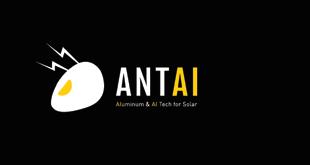
Fujian Antai New Energy Tech. Corp
029
www.antaisolar.com 1300
832 info@antaisolar.com
) *
CEO Jasmine Huang

WHERE IS BIOENERGY IN THE RENEWABLE ENERGY CONVERSATION?
With the circular economy providing a real focus in Australia in 2021, it is critical that renewable energy takes its rightful place as a significant driver of the sustainable outcomes needed to drive that transition. It’s also important that bioenergy starts to become a serious part of the conversation around the renewable energy transition.
The role of bioenergy in supporting the move to a renewables dominated electricity grid remains a core focus of leading Australasian resource recovery company ResourceCo.
CEO of ResourceCo Energy Systems, Henry Anning, who recently moderated a panel for Bioenergy Australia on the subject, said it is critical these issues are explored through the Energy Security Board’s Post-2025 Electricity Market Design project.
“The electricity sector is rapidly transitioning from fossil fuels to renewables, from baseload to intermittent, and from large scale to distributed, but we are not seeing enough attention on what’s required to achieve those sustainable outcomes,” said Mr Anning.
Mr Anning said while it was encouraging to see the Federal Government putting a focus on environmental stewardship, including work on climate resilience, implementing export waste bans, and investing in new and upgraded waste management infrastructure, bioenergy was yet to attract the same recognition.
“Solar and wind renewables have previously held the focus of policymakers, but hopefully this year we will see an elevation in the role of energy-from-waste, supported by strong waste management policy.
“It’s pleasing to hear the increased public debate around targets and timelines for Australia to reach net zero emissions and an acknowledgement from the Prime Minister that technology will be a significant driver of change.
“We’re also keenly awaiting release of the Australian Renewable Energy Agency’s Bioenergy Roadmap, which will help inform investment and policy decisions in the sector.”
As a company, ResourceCo is a leader in the development of world-class energy-from-waste plants, which divert waste from landfill and lower carbon emissions through production of a commercially-viable sustainable energy product.
ResourceCo Energy manufactures processed engineered fuel primarily from waste timber materials but also previously nonrecyclable plastics, cardboard, paper and textiles.
“Energy recovery from residual waste is a proven and successful energy solution widely adopted across Europe and the UK. There are a lot of upsides for Australian businesses who recognise the opportunity to reduce their long-term energy costs, risk and emissions.”
As well as investing in its own plants in Adelaide and Sydney, ResourceCo has also invested in the development of tailored solutions for businesses.
“The material ResourceCo produces can be used in boilers to make steam that can be then used for process heat, but it can also provide for power generation. High energy users with existing boilers using between 100,000 gigajoules and a petajoule of natural gas can convert to renewable energy by installing between a five and 40 megawatt recovered fuel boiler.
“Essentially, we’re providing a unique alternative heat solution to gas, coal or electricity in the form of a 90 per cent renewable heat source, at the same time diverting resources that would otherwise be destined for landfill.”
SOLAR AND STORAGE ENERGY PARTNER CONTENT 20 March 2021 ISSUE 13 www.energymagazine.com.au
For more information on ResourceCo and its energy-from-waste initiatives, head to www.resourceco.com.au

TOMORROW’S SOLUTIONS. TODAY
FIVE WAYS
AUSTRALIA’S ENERGY TECHNOLOGY WILL CHANGE IN THE NEXT DECADE
by Domenic Capomolla, Chief Executive Officer, Tango Energy
What can we expect from the energy industry as we move further into the 2020s, and adjust to a COVID-normal world? Here, Domenic Capomolla dusts off the crystal ball and shares his predictions.

SOLAR AND STORAGE 22 March 2021 ISSUE 13 www.energymagazine.com.au
Amajor impediment to the rollout of green technology, like solar panels and battery storage, has been cost. But it’s the same with every new technology.
There’s a period in which a new technology is prohibitively expensive. That’s due to high front end research and development costs, smaller production runs until the market becomes convinced of a new technology’s benefits, and low demand.
But once demand grows, it becomes a major driver to delivering affordable technology. As economies of scale kick-in, the technology improves, supply chains open up, the price drops and the technology becomes not only affordable, but a must have.
That was the case with VCRs, mobile phones, CD players and DVD players. When they first entered the market, they cost thousands of dollars, but confident of latent demand in the market, manufacturers began rolling them out at scale, bringing the price significantly down.
When it comes to renewable energy, we’re at such a point now. The drive to better and cheaper green technology is well underway and will only gather momentum.
Here are five ways energy technology will evolve and change over the next decade.
Solar panel affordability will drop a further 15-35 per cent by 2030
Once the market recognises there is demand in the market for a good, it’s not long before new entrants arrive. That has certainly been the case with solar panels.
In Australia, there are over 2.53 million homes with solar panels, but of course solar panels are part of a global industry, with many suppliers in the market, driving down price at the same time as improving efficiency.
In the decade since 2010, global solar panel installations grew six-fold and prices have dropped from $2 per watt to $0.20. Add to that a 90 per cent drop in the price of polysilicon in that period – $80 to $8.40 – and the trend is clearly down.
The cost of solar panels has dropped significantly over the last 20 years, and we expect to see a further drop in the sphere of 15-35 per cent by 2030 as the technology improves, becomes cheaper, and we cross a cost-benefit tipping point.
Already we’re at the stage where you can have a solar panel installed and pay it off over several years. The cost savings from the panel cover the additional costs of the panel, so effectively you’re getting it for free. And after you’ve paid it off, you end up with essentially free, or very cheap power for that property. That is an attractive proposition and becoming very hard for consumers to resist.
By 2030 over 30 per cent of Australian roofs will be covered by solar
As of 31 August 2020, more than 21 per cent, or 2.53 million, Australian homes had solar panels. It’s a trend that is expected to continue.
In 2018, solar accounted for 5.2 per cent of Australia’s total electricity production, producing 11,324MW of power. The figure has since jumped to 17,616MW in 2020.
By the close of 2018, 1.96 million houses had solar panels, with a further 78,000 covering commercial and industrial roofs. As of June 2020, Australia had over 2.53 million solar panel installations, but that is set to continue apace.
As technology becomes cheaper, more installers enter the market, and more affordable market innovations like battery storage and aggregator technology come on board, it will just continue to climb.
We expect that by 2030, one third of all Australian roofs will be covered in solar.
Virtual power plants
Right now, energy wholesalers and retailers dominate the energy market. They provide either old energy like coal and gas, or like Tango Energy and its wholesale partner, Pacific Hydro, invest in wind, hydro and solar farms.
But there is currently technology that is allowing residential houses with their own solar panels to hook into virtual power plants.
Virtual power plants use sophisticated aggregator digital technology to hook houses up together into a network that can sell power back into the grid.
Not only does this mean that as a household you can supply your own energy and sell your own energy, for the broader public it’s a much more efficient and responsive form of power compared to baseload power.
By 2030, we think that virtual power plants will supply a large portion of the Australian energy market.
The expansion of battery storage
Battery storage is the next frontier of energy technology and one that’s the natural successor and compliment to solar panels.
The idea is simple enough. Rather than drawing on the electricity network to power your house or business in the evening, or when the sun’s not shining, you draw on your own power source –a battery.
The inability to store renewable power has always been the knock on the technology from doubters, but players like Tesla are showing that battery storage is here to stay and only set to get cheaper.
As with solar panels, so too with battery storage, demand and competition in the market is driving prices down.

Very soon we’ll be at a point where the economic outlay for domestic, industrial or commercial is so small that it will be a no brainer. Already it makes economic sense, it’s just a question of whether people have that capacity or willingness to invest.
We predict that over the next decade, a quarter of all homes with solar panels will also have battery storage.
Upgrade of the grid to take more renewable energy
The national electricity grid was established differently in different states a long time ago.
In Victoria, it was built to fan out from the LaTrobe Valley to transmit electricity from big coal-fired power stations. The grid is designed to accommodate this baseload power, rather than to incorporate the intermittent energy that comes from renewable sources.
Once the national grid is upgraded with new poles and wires, it will be more flexible and capable of integrating the increasing loads being generated from renewables.
To illustrate the problems the grid represents to transmitting power, it’s a bit like trying to suck a pea through a straw.
There is enough renewable energy to feed into the grid to ensure supply during periods of peak demand, that’s not the problem. The problem is that the grid is not designed to accommodate the quick supply of energy that renewables can supply.
Once the grid is upgraded, that will go a long way to not only securing energy supply, but we expect that by 2025 the energy mix running through the grid should regularly be 50 per cent renewable/50 per cent old energy.
SOLAR AND STORAGE
23 www.energymagazine.com.au March 2021 ISSUE 13
Domenic Capomolla.
THE FIRST STEP BEFORE YOU BUILD
SOLAR OR WIND
Australia’s love of renewable energy is showing no signs of slowing, with the nationwide adoption of renewable energy growing on average 44 per cent annually over the last ten years. One of the most critical aspects to ensuring a renewable development is financially viable is the monitoring that needs to be undertaken on-site before construction commences. Here we take a look at fundamentals of ensuring a monitoring campaign that produces high-quality data.
As Australia continues to invest in renewables, emerging as a global leader in the field, there is a growing desire amongst the industry to understand the crucial elements that are essential for bringing a successful renewable development project to life.
But before a single panel or turbine can be constructed, there is one foundational aspect that is essential to the success of any solar or wind development – a successful monitoring campaign. Although some differentiation exists between the processes of solar and wind monitoring, one key principle rings true across the board: attaining the highest quality data from your initial resource monitoring campaign is crucial.
“Being able to deliver a gold-standard monitoring campaign is undeniably one of the most important aspects of a successful renewable development,” said renewables specialist, Dr Matthew Bechly. “Without high quality campaigns, you can’t ensure the bankability of your project.”
Data collected from these monitoring campaigns is used to measure expected energy output, and is carried across all financial modelling to predict future income with a high level of certainty. This data is


incredibly important, as it supports and validates a project's investment prospects as well as giving a lens into the long-term profitability of a potential site. So what makes for a great monitoring campaign, and how can we ensure that a resource campaign runs successfully?
There are two core elements that contribute to a successful monitoring campaign. First, high-quality instruments and equipment to ensure accurate data collection; and second, comprehensive data collection across varying locations on the proposed site.
Australian Radio Towers, an engineering, fabrication and construction company, is one company that has continued to see the benefits of investing in high-quality monitoring campaigns and the equipment necessary to make that happen. Having worked in the industry since 2008 and having supplied monitoring equipment since 2011, the Australian Radio Towers team has continued to see monitoring investments pay off.
“Having been involved in weather monitoring systems and their long-term implications for some time now, there is no denying the benefits of working with the highest quality equipment when striving to deliver a successful monitoring campaign,” said Dr Bechly.
“We’ve even seen some of our monitoring stations weather a cyclone, intact. If that site had been using a cheaper, less durable set of equipment that wasn’t able to withstand the severe weather event, the whole campaign would have been compromised, making it very hard for developers to seek investment to move the project forward.”
Having installed monitoring stations across all states of Australia, Australian Radio Towers has supplied equipment to withstand the rugged Australian terrain, and have consistently been a testament to the notion that investing in high-quality campaigns will always be money well spent.
24 March 2021 ISSUE 13 www.energymagazine.com.au
Rugged monitoring equipment is essential to gathering high-quality data.
SOLAR AND STORAGE ENERGY PARTNER CONTENT
Weather monitoring is essential to the success of a renewable energy project.
Looking for a complete solution for online events?

Combining our experience in publishing, live events, digital marketing and video production, Monkey Media has the capability to deliver a range of online events for your organisation.



Specialising in the energy, infrastructure and utility sectors, we combine our expert knowledge in these fields with our behind-the-scenes knowhow to help you deliver your events in a range of online formats.
We work closely with our partners to understand why and how you want to connect with your audience online, and can recommend the right solution to help you cut through and achieve the high levels of audience engagement and participation you’re looking for.
Some of the online events we can help you deliver include:
Webinars
Virtual conferences
Awards nights
Round tables
Online learning for a complete online event solution
9988 4950
03
www.monkeymedia.com.au/services/custom-virtual-events/
BOOST YOUR SOLAR OUTPUT BY 30 PER CENT

Solar panel tracking isn’t a new technology, but today, some project developers will still question the value of adding trackers to their solar farm. Here, we take a closer look at solar tracking technology, and the efficiency gains developments can see when trackers are used – which can be up to 30 per cent in some cases.
Solar trackers have been in use in the energy industry since the early 2000s, allowing owners of solar panels –from smaller residential arrays to large-scale utility developments – to enhance the amount of sun that directly hits their solar panels each day.
Taking a step back, solar trackers work by increasing the amount of light solar panels are exposed to. The more light they are exposed to, the better they work. Further, the angle at which sunlight hits a solar panel – the angle of incidence – also has an impact on how effective a solar installation will be. The narrower the angle, the more energy a solar panel will produce. Anything that you can do to reduce the angle of incidence, such as installing a solar panel tracker, will optimise the amount of energy a particular solar panel can produce.
Bringing things back to the 2020s, in the two decades since solar trackers started to become widely used, there have been significant developments in their efficiency and operation. We now have the option of single-axis and dual-axis solar trackers, and trackers on frames, which can increase the level of sunlight directly hitting a solar panel. There has also been considerable reduction in the number of moving components in trackers, providing the significant benefit of reduced maintenance.
Significant research has been conducted around Australia to understand the bottom line benefits adding solar trackers to a large development can provide. While the exact figure varies, depending on the location (adding trackers will provide increased benefit the further south the location) and size of the installation,
developers can expect to see a gain in efficiency of up to 30 per cent with the addition of solar trackers.
The essentials of solar tracking
While in many cases the addition of trackers will be a no-brainer, like many things in life, the devil is in the detail. There are a range of tracking technologies on the market, so it’s important to be discerning and ensure you select a product that will deliver for you for many years to come.
One of the biggest challenges when it comes to solar tracking is ensuring accurate, trouble-free positioning of the panels. To ensure this, a tracking system needs to be highly rugged and able to withstand wind and weather. It must also function reliably and maintenance-free for many years. Altra Motion brand Thomson offer affordable linear actuators and screw jacks, custom-fitted solutions to these challenges.
Solar tracking requires actuation solutions that are stiff and will not backdrive in high wind conditions. All Thomson actuators and screw jacks can be equipped with a holding brake that eliminates back-driving.
Accurate tracking often requires some form of feedback. Most Thomson actuators and screw jack models can be equipped with encoders, resolvers or potentiometers to meet either analog or digital feedback requirements.
All Thomson actuators and screw jacks are available with adjustable end of stroke limit switches to protect the panel from damage due to overtravel in either direction; and multiple mounting options are available.
Actuators and screw jacks require little to no maintenance, making them ideal
for solar panel applications. Thomson actuators and screw jacks are offered with both analog and digital feedback to allow precise tracking of the sun.
In addition, Thomson has a long history of building custom products. A customtailored solution can be an integrated part of the structure and make assembly quick and easy.
Gregg Booyens, Business Development Manager at AltraMotion, said “Thomson actuators and screw jacks have bespoke, solar power tracking units that are designed to cope with everything our harsh Australian climate can throw at it.
“Solar energy investors can rest assured that with correct selection, installation and some TLC, they will have many years of trouble-free service.”
Protecting the bottom line
When the right equipment is utilised, installing tracking technology on solar developments is a fantastic investment that will increase the output of an installation. It’s a way to reliably enhance a renewable investment, and importantly, trackers can help reduce the return on investment for significant solar developments.
Making the decision to invest in clean energy can be expensive, but with the right technology, that investment can be easier to bear.

Thomson actuators and screw jacks are available now in Australia through Altra Motion. For more information visit www.altramotionrenewables.com.au or call 1300 ALTRAMOTION.



SOLAR AND STORAGE ENERGY PARTNER CONTENT 26 March 2021 ISSUE 13 www.energymagazine.com.au
A Thomson actuator.















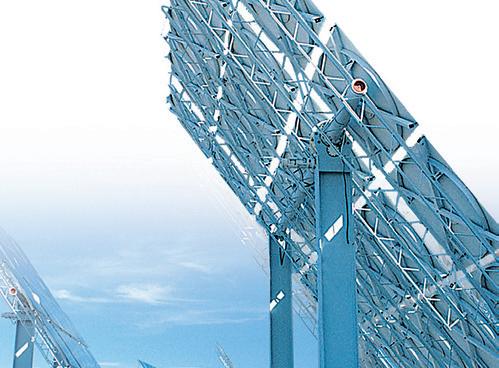

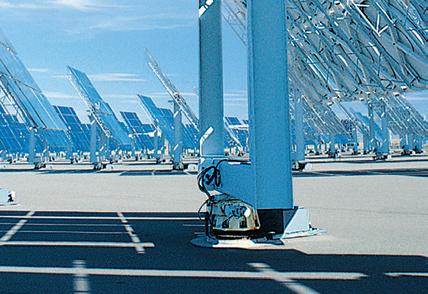

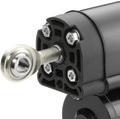










THE FUTURE OF SOLAR BATTERY TECHNOLOGY
Solar batteries are constantly evolving, and a new product taking advantage of Lithium Titanate technology offers small and commercial-scale users benefits including a massive 20-year lifecycle.

The Zenaji Aeon Battery is truly a leap forward in power storage technology. The Australiandesigned and assembled Zenaji Aeon is a Lithium Titanate (LTO) battery suitable for both on and off-grid applications in domestic and commercial settings. Boasting a 20-year warranty, the Zenaji Aeon Battery delivers the best lifespan and performance while providing the most cost-effective solution on the battery market.
With their warranted cycle life of 20 years (or 22,000 cycles) and a tough weatherproof aluminium case, the Zenaji Aeon Battery is a lifetime solution for energy storage needs. Each Zenaji Aeon battery provides 1.93kWh of energy storage, and with their superior cycling performance, allows three cycles a day to take complete advantage of your energy production and off-peak energy pricing plan.
The batteries enable a system to capture and store the solar power throughout the day to be used at night, rather than feeding this power back into the grid, to further reduce the property’s energy bill. When the grid is down, the stored energy from Zenaji Aeon Batteries, with the appropriate inverter and utility approval, can automatically switch to off-grid mode and continue to supply power. The Zenaji Aeon Battery’s clever no-frills design also
makes interior or exterior installation simple and easy. It can be horizontally or vertically mounted on a wall, while keeping space and aesthetic in mind.
The Zenaji Aeon Battery is powered by Lithium Titanate (LTO) technology. Other lithium battery chemistries on the market such as Nickel Manganese Cobalt (NMC) and Lithium Iron Phosphate (LiFePO4) cannot be deeply discharged and have a lifecycle of only 3,000 cycles before they fall below the 70 per cent threshold. The properties of LTO however are ideal for energy storage solutions as they last longer, are safe and have a better temperature tolerance.
While the Zenaji Aeon Battery is designed to provide long lasting, reliable power to light, domestic applications, Zenaji also offers the Eternity battery, which was developed to meet the growing demand for commercial-scale energy storage. Taking full advantage of the incredible charge and discharge characteristics of LTO, along with the advanced safety, the Zenaji Eternity represents the longest lasting and lowest cost per kilowatt hour energy storage solution for commercial applications. The Zenaji Eternity’s basic building block is 33.8kWh and is scalable for commercial users according to the megawatts needed by utility power companies.
To take advantage of any state’s solar battery rebate, visit R&J Batteries, Australia’s major distribution partner of Zenaji Aeon Batteries. Celebrating 25 years of service with 25 branches across Australia, R&J Batteries will offer advice for any solar storage solution. Visit rjbatt.com.au or call the closest branch on 1300 769 282 for more information on Zenaji Aeon Batteries.
SOLAR AND STORAGE ENERGY PARTNER CONTENT 28 March 2021 ISSUE 13 www.energymagazine.com.au
THE NEXT STEP IN BATTERY TECHNOLOGY
Zenaji AEON, Lithium Titanate Batteries allow you take full advantage of your home solar installation, delivering the best lifespan and performance on the battery market.

Available from R&J Batteries and distributors across Australia.
Talk to the experts on how Solar Storage can work for you.
// 1300 769 282 // rjbatt.com.au/store-locator
YEAR W ARRANTY
20

POWERING AUSTRALIA’S HYDROGEN FUTURE
by Michelle Goldsmith, Contributing Editor, Energy Magazine
30 March 2021 ISSUE 13 www.energymagazine.com.au HYDROGEN AND FUTURE FUELS

Hydrogen is tipped to be a game-changer in the rapidly transforming global energy sector. With the right strategy and investment, it could also be Australia’s next big energy export, with key Asian markets already scoping large-scale investments. Recently, NERA (National Energy Resources Australia) announced the launch of a $1.85 million network of hydrogen technology clusters to boost Australia’s burgeoning hydrogen industry. Energy spoke to NERA CEO Miranda Taylor about the technology clusters, their role in the industry’s development, and what it will take for Australia to become a global hydrogen energy powerhouse.
31 www.energymagazine.com.au March 2021 ISSUE 13 HYDROGEN AND FUTURE FUELS
It’s easy to get excited about hydrogen. With its potential as a clean, flexible, storable, portable and safe fuel source, hydrogen could transform Australia’s energy sector, accelerate emissions reductions and boost the economy. In fact, according to a 2019 Deloitte report, it could increase Australia’s GDP by up to $26 billion and provide 16,900 jobs by 2050.
Better together

A number of programs are currently underway to help realise Australia’s hydrogen potential, with federal, state and territory governments all releasing hydrogen strategies and allocating funding. According to Miranda Taylor, effective industry collaboration, such as that fostered by the technology clusters, will be critical to success.
“NERA’s mandate is to create the connections and collaboration needed to support the growth of advanced manufacturing of clean energy technologies, and industry-led clusters are central to this. We’ve identified technology clusters as the area where NERA can add most value, and they’re central to our strategy for supporting the commercialisation and scaling of the emerging technologies that are needed to support the production and uses of hydrogen,” she said.
“Australia already has an abundance of research-focused programs – including cooperative research centres, hubs, CSIRO and industry-led projects – plus more than 60 demonstration or pilot projects, and an array of programs that target individual small businesses. However, decades of international experience has shown that small businesses operating in the same industry sectors and value chains can, by clustering, accelerate the commercialisation and scaling of technologies, drive faster skills and knowledge transfer, and encourage novel ways of combining innovation and technology solutions. We need a far more coordinated way of developing Australia’s hydrogen capabilities and capacities, as well as promoting these to domestic markets and, importantly, to potential global customers,” she continued.
It’s intended that NERA’s hydrogen clusters will build a collaborative, innovative ecosystem and coordinate the relationships and action needed to support the growth of Australia’s hydrogen industry and technology value chains.
Ms Taylor continued: “Australia wants to export more than just hydrogen molecules; we want to be exporters of higher value technologies, skills and knowledge.
“I think NERA’s role in creating connections has been fundamental. Identifying the commonalities between people, and then facilitating linkages between them, is very important. We see this as one of NERA’s most valuable functions across everything we do. That’s why it's our tagline – Creating connections for growth.”
Seeding innovation
Preceding the launch of the hydrogen clusters, NERA conducted a thorough consultation across the country to better understand the needs of both the technology companies and other stakeholders.
“What became manifestly clear from our consultation workshops was that we couldn’t do a top-down approach where we just focused on one big national cluster from the start,” Ms Taylor explained. “We really needed a more organic bottom-up approach that took a regional approach and allowed the clusters to self-identify and form into natural communities of practice. This is how clusters work most successfully across the world, with clusters of technology firms often emerging in a regional setting around a common industry.
“We put out an expression of interest to the whole of Australia, inviting early stage clusters to apply for NERA seed funding and demonstrate their value proposition. NERA’s selection criteria evaluated a number of things, including identified benefits and outcomes, capabilities and chance of success, and the ability to leverage support from government and existing members, as well as proximity to and relevant/suitability to the regional hubs.
“We also consulted with each of the state and territory governments to understand their priorities so that we could identify which clusters were most likely to be able to leverage government support.”
As a result, 13 technology clusters have been selected to date, covering all Australian states and territories, and located in the emerging regional hydrogen industry hubs.
“Each state, territory and region is likely to have a different focus, for example production, storage, hydrogen transport and utilisation,” said Ms Taylor. “The clusters have self-identified where their value proposition is likely to be highest in the first instance. As a whole group, however, the clusters formed so far will almost certainly address technologies across the spectrum.
“Although hydrogen is not yet an industry that exists at scale in Australia, hydrogen itself is not new. By way of example, it is already being used in fertilisers and agriculture and as industrial feedstock. There are also more than 60 pilot projects
32 March 2021 ISSUE 13 www.energymagazine.com.au HYDROGEN AND FUTURE FUELS
at various stages of development and in different regions right across Australia. Clear regional ‘hubs’ are emerging where there are existing ports and export infrastructure; contingent industries; access to energy networks and renewable energy sources such as solar, wind and hydro; a skilled workforce; research facilities; and the technologies that will all be essential to developing the hydrogen industry and regional hubs around which these clusters are forming.”
NERA anticipates that the current clusters will gain significant momentum on their business plans in the near future, and intends to continue building the cluster network.
“By 18 months’ time we'd like all of the clusters to have identified and mapped out their market opportunities, developed and begun to implement their business plan, and to have identified some early collaborative projects and technology development opportunities,” said Ms Taylor
“We hope to see that the clusters identify a common commercialisation or R&D challenge they can’t afford or have capacity to address individually; that they have complimentary capabilities and knowledge that they can share; that they undertake a joint market identification and development exercise. And this might include building shared test labs or market demonstration sites.
“One size will not fit all, and we want these hydrogen technology clusters to be diverse, self-led and adaptive. NERA will work with each cluster to develop the best approach and activities for them.
“Over the next year, we will be working with the clusters to form a connected national network — a virtual ‘super’ cluster — and, most importantly, we’ll be working with them to identify a sustainable funding model for their future success. We will also continue to work closely with the clusters that were not selected as part of our funding, and over the next six to 18 months hope that their value proposition may strengthen, and funding partners be secured.”
Australia: a potential hydrogen powerhouse
Meeting Australia’s goals and reaping the benefits of developing world-class hydrogen technology and expertise will require a big-picture perspective.
“There is a wide scope to this emerging hydrogen industry,” said Ms Taylor. “We’re talking about everything from production, to storage, to transport, to utilisation. And then there are all the technologies and capabilities that will enable those different sectors.
“Australia needs to be addressing the whole value chain in parallel. We can’t just focus on one part of the story if we
are going to join the dots and create an end-to-end industry, including ultimately an export market for both hydrogen and the supporting technologies, capabilities, knowledge and skills.”
Ms Taylor believes that if the groundwork is done now, Australian hydrogen exports are a strong possibility for the future.
“Looking at a ten-year plus horizon, I think it's realistic to say that we can export hydrogen,” she said. “Ammonia is likely thought of as the most immediate export opportunity. Many of the projects currently on the books have a stage one domestic, stage two export and, like any major capital project, you have to factor in the timeframes required to do front-end engineering and design and final investment decisions. Globally, the hydrogen time horizon for achieving a fully mature and scaled industry is out to 2050.
“But we need to start today to take nationally coordinated, across-the-board action to build domestic demand and supply, as well as the required infrastructure, technologies, skills, regulations and community support, including for transport, storage and export.”
One important area of focus identified by Ms Taylor will be to develop the economics for ‘clean’ hydrogen, as clean hydrogen could play a major role in helping Australia and the world achieve net zero carbon target.
“Australia will have to find ways to decarbonise our energy system and industries – including hard to abate industries such as steel and cement –because the investment and finance market and our global customers are going to require it. We're going to need many solutions. It’s a story of ‘and, and, and’ rather than picking one solution, but hydrogen is well positioned to play a major role.”
Investing in the future
Ensuring Australia is at the forefront of the global hydrogen industry will require adaptability and a willingness to invest now for long-term rewards.
“All of the key players in Australia are committed and excited about the future potential for hydrogen, including industry leaders, governments across the board, government funding agencies such as ARENA and the Clean Energy Finance Corporation, research organisations and technology entrepreneurs,” said Ms Taylor. “The Federal Government and each of the states are rolling out their hydrogen strategies and funding significant initiatives and projects.
“It’s going to take strong government coordination, leadership and investment as Australia emerges from the current global pandemic and as we seek to diversify our economy beyond our

traditional resource industries into manufacturing higher value technologies, and to decarbonise through clean energy solutions. We’ll also need to keep a clear eye on what the rest of the world is doing in the hydrogen space and the quantum of spending to support the development of the industry.
“Whilst Australia has many advantages, including our abundant and diverse energy resources, we are not the only country with advantages or an appetite to secure this emerging opportunity.”
Ms Taylor strongly emphasises that seizing the huge economic opportunity that a hydrogen industry could create will require strong government support.
“We cannot simply expect this to come about by itself. For example, there are no existing consumers or customers large enough to enable scale and drive down the cost of producing hydrogen. It’s going to require government leadership and cross-party collaboration to commit funding to develop Australia’s capability and capacity. We really do need to take action now and put serious funds on the table,” she concluded.
If there’s one thing for certain, it’s that the next big transformation in the energy sector will evolve differently than those that came before and Australia cannot afford to miss the opportunity to be a leading hydrogen powerhouse, growing a new industry and helping decarbonise the world.
33 www.energymagazine.com.au March 2021 ISSUE 13 HYDROGEN AND FUTURE FUELS
Miranda Taylor.
WHY HYDROGEN IS THE BETTER BATTERY
by Andrew Horvath, Global Group Chairman, Star Scientific
There’s been a slew of big battery announcements around the country in recent months, but is there a better way of ensuring continuity of supply in the renewable energy space? Andrew Horvath argues that green hydrogen can not only be a better battery, it can also potentially be a better fuel source for our soon-to-be stranded coal-fired power stations.
It has been an exciting time to be involved in the hydrogen sector and for that, 2020 will be viewed in a far more positive light than most other people. We saw a blizzard of national and international policies released, with the EU’s policy at the pinnacle. It also seemed that every day, somewhere in the world, there were multiple webinars and conferences on hydrogen.
However, the general public’s understanding of hydrogen energy and related technologies is still emerging. It is critical, as an industry and amongst all the hydrogen developments and announcements, we remember that the broader community is only vaguely aware of what hydrogen’s potential is and how it can be used.
Take for example the role of batteries. Recently the media has latched on to big announcements about companies investing hundreds of millions of dollars in big batteries.
There is a false narrative emerging that says batteries mated to solar and wind will solve our renewable energy and grid stability problems. It will only be included in the small print – if at all – that they cannot win all the battles.
They do have a role to play in transitioning towards zero emissions for now, but their impact lasts for hours at best and they really are better suited to transportation, residential and smallscale commercial uses and for critical infrastructure backup. We need to be cautious not to fuel the increasing optimism that these giant batteries will guarantee energy system security.
There is a bigger role for hydrogen however, as a long-duration storage solution with the added bonus of ensuring energy security, exportability and decarbonising hard-to-abate sectors.
Where batteries rule – for now
In Australia, where we have a long, thin grid dominated by aging coal-fired power stations and surging variable renewable energy, Lithium-ion (Li-ion) batteries are currently the kings of the Frequency Control Ancillary Services (FCAS) market.
This means they can provide grid stabilising services, either by a fast injection or fast reduction of energy, to help manage supply and demand. And they are brilliant at it.
They are blindingly fast to respond and can step in to seamlessly supply power that stabilises the grid when a source trips. They are also good at charging or taking excess power back off the grid when other sources have had time to kick in, keeping things smooth.
Another big plus is that they store electricity as electricity. There is no energy conversion and that makes them efficient.
In summary, they are like a defibrillator that provides a short, sharp jolt of energy when there is a shortfall in the system, smoothing out any issues.
Hydrogen for thermal power generation
However, batteries cannot provide this stable, consistent frequency 24/7 that industry and communities need. And that’s where hydrogen can step in.
Coal-fired power stations have the

advantage of spinning mass, thanks to massive turbines, that provide inertia to help keep power delivery smooth.
This is referred to as “conventional thermal” power generation and the grid was designed for this type of generation.
One of the challenges we face today is integrating intermittent renewable energy from wind and solar into the grid, given that these generators are not thermal and therefore do not use traditional turbines. The grid operator has required the addition of synchronous condensers (a spinning mass) to make these sources appear to the grid like thermal generation.
Hydrogen technology that removes this problem for renewables does exist. It provides the missing link between renewable energy and turbines by taking the green electrons converted to hydrogen and purposing them for continuous spinning mass of both conventional turbines and the new generation of turbines such as those powered by supercritical carbon dioxide (sCO2).
This brings us to the first of the two major errors in the orthodox thinking impacting the debates on sustainable energy, that are based on a false premise of an either/or approach, or rather a zero-sum game in relation to sustainable energy infrastructure versus fossil fuel powered systems.
The orthodox thinking is that the former must replace the latter and the challenge we need to confront is to have baseload or dispatchable energy from sustainable energy sources in place before the power stations close.
34 March 2021 ISSUE 13 www.energymagazine.com.au HYDROGEN AND FUTURE FUELS
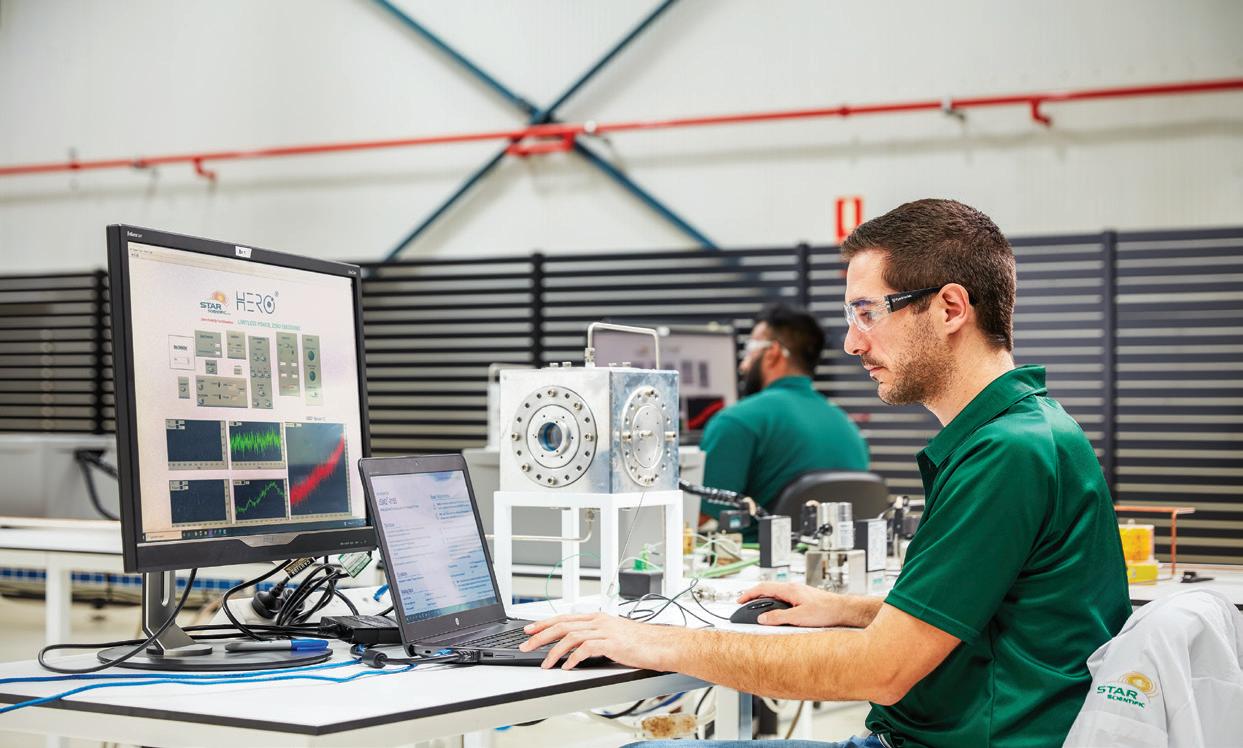
It is our contention that power stations need not close.
If the answer to reliable, sustainable baseload power is spinning mass via turbines (and it is), then the question needs to be asked; why do we need to dispose of those assets and the transmission systems to which they are attached and render them “stranded”? If the issue is the fuel source, then why not simply change the fuel to green hydrogen and keep the turbines spinning?
Hydrogen provides us with that alternate fuel source – and it is inexhaustible, continuous, and does not produce emissions. Now is the time to explore this as a viable solution for a zero-emissions energy source.
The second major error in thinking is the blind faith that electrons generated by wind, solar and pumped hydro injected straight into the grid is the preferred, and seemingly only viable, model for energy supply. As recent reports have found, the problems of intermittency and over-supply at certain times are yet to be addressed, creating actual stability issues for the grid and uncertainty in energy markets.
Hydrogen addresses this in two ways.
Firstly, green hydrogen is, in one respect, a “better battery” than the Li-ion subset, with problems of longevity, rarity of core
components and carbon debt in their production. In the last two decades there has been a “gold rush” in the sustainable energy sector, and many wind and solar assets have been rushed to the market, with poor business models, and are now under financial distress.
Hydrogen offers a better business model for these assets, allowing them to turn their spilled electrons to the production of green hydrogen, regardless of the time of day and the weather conditions.
The second way that hydrogen obviates this issue is that, as a better battery, hydrogen, when matched with emerging technologies such as the super-critical sCO2 turbines, is scalable. It is therefore able to be applied to industrial and domestic uses off the grid. Thus, the supposed risks of sustainable energy sources to the grid are significantly reduced or removed.
Why hydrogen is a better battery
So, what does it all come down to?
While the price of Li-ion batteries continues to decrease, they are still expensive. Even at current prices, they become a harder sell if the capacity required is more than four to five hours.
Hydrogen has an energy density of 39kWh/kg, which means that 1kg of
hydrogen contains 130 times more energy than 1kg of batteries, meaning lots of energy can be stored with hydrogen and nit weigh a lot.
Where the case for Li-ion really starts to look like a stretch is when a lot of power is needed to run 24 hours a day, seven days a week, year-round.
Hydrogen on the other hand can be stored for years. Hydrogen technology exists today, that will run 24-7, 365 days a year, as long as it has the fuel it needs, rendering batteries and their limited grid-related uses redundant.
As much as battery storage technology is important in transitioning towards zero emissions, there is a bigger role for hydrogen as a long-duration storage solution, ensuring energy security, as well as enabling the decarbonisation of hard-to-abate sectors.
In the end it is about heat and how you feed it. Everything around us, every consumable item is a product, at some stage, of heat. Hydrogen technology can provide continuous, carbon-free heat. Batteries simply can’t.
It is up to us to communicate this clearly to the community, so they understand, clearly, where all the moving parts of the transition are and how they fit in.
Andrew Horvath is Global Group Chairman of Star Scientific, where he oversees the business strategy and development behind the company’s breakthrough and award-winning technology, HERO®. The company has an MoU with the Republic of the Philippines to lead the transition of the entire nation from largely fossil-fuelled power to a hydrogen-powered economy with HERO® and green hydrogen.
35 www.energymagazine.com.au March 2021 ISSUE 13 HYDROGEN AND FUTURE FUELS
A scientist at Star Scientific’s research facility.
MANAGING COMMUNICATIONS ON A REMOTE SITE
In the Australian energy market, developers often need to navigate the dual challenges of managing projects in remote locations, while ensuring constant, reliable communications with isolated project teams. When managing such projects it’s critical to stay up to date with the latest technology and communication offerings.
Field teams in remote Australia work in some of the most inhospitable, unforgiving environments on earth. The very nature of many energy projects necessitates teams working and travelling through communications blackspots, often housed in temporary sites without any local communications infrastructure or fixed-line internet services. Both site operations and staff are entirely disconnected from the outside world.
Australian Private Networks’ (APN) portable satellite internet connections enable reliable, unlimited data flows to and from remote mining camps anywhere in Australia, with minimal time or effort required to get them set up and online. Using highly compact, grab-and-go satellite terminals built into 2RU protective cases that connect to the satellite dish, APN’s Comms-on-the-Pause (COTP) solution comes with either automatic or manual alignment functionality to lock onto the satellite connection.
Satellite internet with portability
Mobile teams require compact mobile communications equipment that can be quickly deployed for assignments and quickly disassembled when time to move on.
Employing a portable satellite dish and terminal that can be quickly and easily assembled in the field is crucial to the solution's usability.
Solutions also require flexibility and long-term stability, needing to operate anywhere from a few days to many weeks at a time, or even longer should an assignment be extended.
There is a choice depending on functionality required, with a range of formfactors and mounting options available.
The ground-mounted variant has been specifically designed for ease of setup. With a non-penetrable frame, users can set up the unit on terrain that cannot be drilled or where digging is impractical.
This is a common obstacle for contractor teams working on client sites.
For the ability to move on without the need to disassemble a ground-mounting frame, the satellite dish can be mounted to the roof of a crew vehicle or attached to a pole on a trailer (see Figure 1).
For a compact solution that can be quickly and securely transported, the satellite dish can even be mounted and built into a case (see Figure 2). This allows for packing and storage for transport without the risk of damaging the hardware.
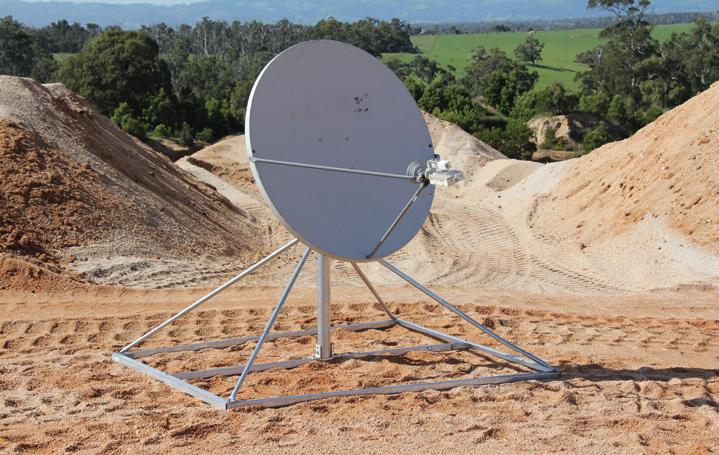
Solutions are ideal as an emergency backup for existing networks or satellite phones to guarantee individuals' coverage while working in the field.
Enabling continuous data flows
The ability to communicate data in real time to-and-from remote teams creates the opportunity for a host of new interconnected applications, as well as enabling access to corporate systems through a VPN.
Offering unlimited data, custom contention rates and typical connections of 30Mbps download and 5Mbps upload, APN’s portable solutions support the ever-growing requirement for simultaneous data, voice and video connections.
Clients can tailor costs and speeds to their specific requirements by controlling the number of users assigned to a dedicated data pipe.

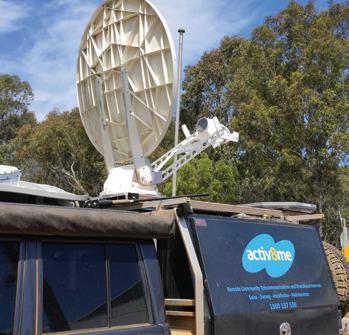
To find out more about Australian Private Networks portable satellite internet solutions, visit www.apn.net.au
March 2021 ISSUE 13 www.energymagazine.com.au
36 PROJECT SOLUTIONS ENERGY PARTNER CONTENT
Figure 1. A ground-mounted installation requires no digging or fixed structure, perfect for sites and temporary locations where ground tethering or digging is not possible.
Figure 2. The satellite dish and aligning system can be built into a transportable skid-case for protection of the system during transportation between sites.
A vehicle-mounted system with autoalignment for ease of set up and use.
Australian Private Networks offers internet, phone and WiFi solutions for energy providers in remote Australia.
Our solutions include:
Unlimited data plans
Low contention rates
Fixed or portable hardware
Solar, self-sufficient options
Optional P2P, Extended WiFi and Public WiFi
Installation & Field Support Australia-wide
Our solutions overcome the communications limitations of operating in remote locations.
With our internet services, operators can access Cloud-based applications, integrate remote monitoring and utilise M2M/IoT technologies. No matter your challenge, we offer scalable solutions to meet any requirement. Our in-house team can even design a bespoke solution to fit your needs.
For enquiries contact our C Corporate Sales team or visit: www.apn.net.au



Major Partner Contact Us
03 8566 8312 Connectivity for Remote Operations, Anywhere.
MOBILE CONTACT VOLTAGE SOLUTION
QUICKLY IDENTIFIES HAZARDOUS CONDITION IN SCHOOLYARD
As underground cable and distribution systems age, electrical faults occur with increasing frequency due to damage, workmanship issues and general deterioration. Energy utilities need a quick, effective solution to identifying these faults before they can cause damage or harm the community.
Recently, a utility deployed a mobile contact voltage solution to perform a survey of its underground distribution areas. The client sought a new solution for an old labour-intensive process of identifying faults. They were unaware of any ongoing faults in its underground distribution system and had no record of any public safety risk reports over the past decade.
A crew was quickly deployed, operating the sensitive detection equipment to survey the city. Within days of starting, one of the trucks triggered an alarm while passing a church complex.
A canvass of the area identified a large energised steel fence surrounding the church’s elementary school playground. The technicians investigated and confirmed the fence was energised at 107 Volts.
Because playground equipment was located along the energised fence, the survey team immediately cordoned off the area and remained on-site to ensure the public remained a safe distance from the hazard. A utility repair crew was dispatched and arrived shortly thereafter.
A quick review of GIS drawings noted a service cable located perpendicular to the fence and adjacent to a tree. Service was disconnected to make the area safe. Excavation of the area revealed that the tree roots cracked the service duct and pushed underground cable into contact with a buried steel fence post. A small section of cable was replaced and the concrete sidewalk was restored.
This is a typical underground fault that can only be discovered using Logsys Power Service’s exclusive mobile contact voltage detection solution.
The solution provides unmatched intelligence and visibility into the health of underground distribution systems and assets. Using a combination of cutting-edge electric field detection technologies and purpose-built data systems, we proactively scan utility assets and detect electrical faults before they can impact utilities.
Logsys’s capital expenditure-based, programmatic approach to secondary system management provides accurate asset assessments, helping electric utilities:
» Improve public and worker safety
» Improve system reliability through intelligent asset management
» Reduce costly energy losses and carbon footprint
» Reduce emergency and unscheduled O&M costs
» Prevent risk and cost of failure or premature replacement of assets
» Avoid service interruptions
All data collected in the field is organised and accessible in real time through both automated reports and our web-based geospatial software application.

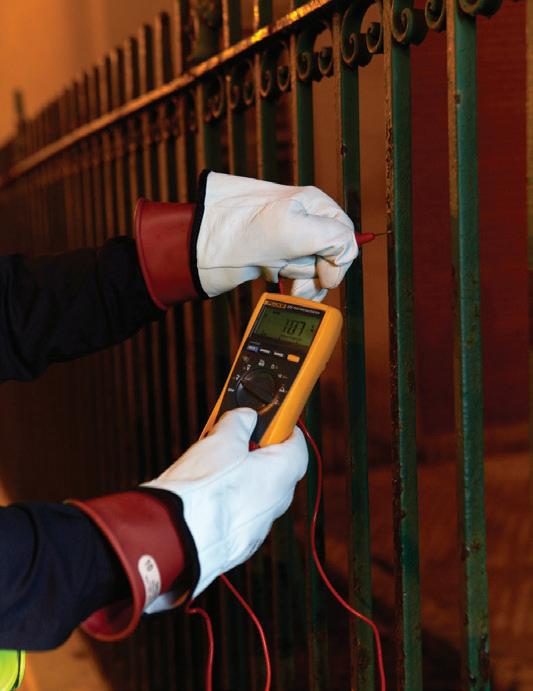
To learn more, contact your local Logsys Power Services professional at jjankowitz@logsys.com.au
March 2021 ISSUE 13 www.energymagazine.com.au
38 PROJECT SOLUTIONS ENERGY PARTNER CONTENT
A recent survey of a utility’s underground distribution areas discovered an energised fence close to a playground.
Logsys Power Service’s mobile contact voltage detection solution provides accurate asset assessments.

Discover a new approach to mitigate safety and reliability risks in your underground distribution network using state of the art technology with our Mobile Asset Assessment Vehicle, MAAV TM
Reliable data collection to improve asset management decisions
Improved public and employee safety

Improved underground system performance and reliability
Reduce energy losses
Lower emissions an
(08) 9300 2950
enquiries@logsys.com.au | logsys.com.au
|
.
company
REDUCE VOLTAGE LEAKS Improve Safety, Reliability, and Energy Efficiency
DOUSING THE FLAME:
WHY NATURAL GAS ISN’T THE ECONOMY-SAVING SOLUTION AUSTRALIA NEEDS
by Eliza Booth, Assistant Editor, Energy Magazine

There’s been a lot of talk, especially from the Federal Government, about the role that gas will play in the country’s economic recovery from COVID-19. However, a new report from the Grattan Institute explores the uncomfortable truth that natural gas is not quite the economic solution we’ve been looking for, and that in fact, natural gas has only a finite role to play in Australia’s energy future.
40 March 2021 ISSUE 13 www.energymagazine.com.au
DOMESTIC GAS OUTLOOK

41 www.energymagazine.com.au March 2021 ISSUE 13 DOMESTIC GAS OUTLOOK

In May 2020, a leaked draft report from the Federal Government’s National COVID-19 Coordination Commission (NCCC) outlined a gasfired recovery plan for the pandemic recession. This news was later confirmed by the Federal Government with Prime Minister Scott Morrison spruiking the benefits of investing in the gas market on multiple occasions.
The gas-led recovery plan from the NCCC detailed how growing advanced manufacturing in Australia and creating a competitive domestic gas market would help support around 85,000-170,000 direct jobs, hundreds of thousands of indirect jobs, as well as drive down gas prices.
Prime Minister Morrison also issued an ultimatum to the energy industry: build 1,000 megawatts of dispatchable electricity generation to cover AGL’s Liddell coal-fired plant (which will shut in 2023) by April 2021, or Snowy Hydro would be tasked with building a gas-fired power plant in the Hunter Valley.
Throwing a spanner in the works, in November last year, the Grattan Institute released a report, Flame out: the future of natural gas, which found that the role of natural gas as an energy source for homes and industries will inevitably decline over the coming years, and industry and government need to be ready for this reality.
Tony Wood, Energy Program Director at the Grattan Institute and co-author of the Flame out report, spoke with Energy Magazine about the findings from the report, the future of gas in the energy industry, as well as the role that government and industry need to play to ensure Australia meets its emission targets while ensuring there is enough dispatchable energy to keep up with demand.
What the report says
Flame out explores how a combination of environmental and economic factors are placing pressure on the gas industry and, as a fossil fuel, steps need to be taken to plan for a future where gas plays a significantly reduced role in the market.
Mr Wood said that the initial research for the Flame out report was underway before the announcement of a gas-led recovery and was inspired by high gas prices in recent years, rather than as a response to the Federal Government’s position on gas.
“Gas isn't cheap anymore. It's not going to be cheap in the future. That's our physical reality, it's not a political or ideological reality, and that has consequences,” Mr Wood said.
The report explored two main challenges affecting the future of the Australian gas industry. Firstly, Australia has strict emissions targets that it needs to meet, and in order to achieve these, it needs to reduce emissions over time. Natural
42 March 2021 ISSUE 13 www.energymagazine.com.au DOMESTIC GAS OUTLOOK
Tony Wood argues that gas’s role in Australia’s energy future will be like that of a cameo actor in a theatre production – small, important, but not taking centre stage

gas is a fossil fuel, plain and simple, and the sector is not exempt from the need to reduce emissions.
Secondly, gas is no longer cheap. The report explains that the east coast gas market will never go back to the days of low-priced gas. This will inevitably lead to gas becoming an expensive energy source which won’t be beneficial for consumers.
The report concludes that to overcome these challenges, governments should support more low-emissions alternatives that are able to replace gas manufacturing, such as hydrogen and renewables-based energy. By supporting the development and deployment of these technologies, governments and industry will remove the barriers to better, low-emissions options, which will foster a greater renewablesbased energy sector.
Why a gas-led recovery won’t work
While the Flame out report was originally conceived before the NCCC’s COVID recovery announcement, and intended to look at other main concerns, it does address why the Government’s gas-fired recovery isn’t quite the economic boon some might think it is.
“We didn't start out to prove that there shouldn't be, or that there is not going to be, a gas-led recovery. We had two other things we were interested in. But then we started to see the argument for a gas-led recovery and thought, ‘This is crazy. This doesn't make environmental sense and it doesn't even make economic sense’,” Mr Wood said.
“Putting aside whether gas can be cheaper, which is what our report was all about, the thing that got us into trouble with a lot of manufacturers was that we were suggesting that even if you did have cheap gas, it wouldn't be a fundamental economic recovery model for Australia, and that's what our analysis was showing very clearly.”
Central to the benefits spruiked by the NCCC and Prime Minister Scott Morrison, was that the gas-fired recovery would be a manufacturing goldmine, protecting and creating hundreds of thousands of jobs, however, Mr Wood said that this isn’t quite the case.
“Gas is important, really important, for between five and 10,000 jobs. What we should then be doing is focusing there, rather than trying to artificially protect those jobs, because the fundamental issues are; our gas prices aren't going to come down, but emissions have to.
“There are jobs that will go over time, and the more money we spend on protecting them, the less money we've got to spend on repositioning them.”
Additionally, the report said that even if the Government implemented initiatives it has hinted at, like underwriting new gas pipelines or supporting gas production, the
benefits wouldn’t be wide-ranging enough to help the economy recover, especially as these policies and investments take a long time, making them unsuited for rapid economic recovery.
The role of gas in Australia’s energy future
So, if natural gas is not the best option for economic recovery, and Australia needs to concentrate on developing and deploying renewable-based energy options, what role will natural gas play in Australia’s energy future? Mr Wood said that while gas will have a role to play, it won’t be in large volumes. Mr Wood likened the role of gas in the future energy landscape as a cameo actor in a play, acting as a backstop, but not taking centre stage.
“If the Melbourne Theatre Company is putting on a play and they could get Kenneth Branagh to come and do a walk-on cameo in a Shakespearean play for a couple of minutes, that would get the crowd in. It wouldn't be a big role, but really important. That's the sort of role gas is going to have. It’s going to be really important, but not onstage all that much.”
With renewable-based energy generation increasing in Australia, especially in South Australia and Victoria, the need for backstop forms of energy will be critically important, especially when weather conditions are not optimal for solar or wind generated energy.
“There will be times in winter when you get higher levels of renewables. Look at South Australia, for example. There are times in South Australia when the winds are blowing, they're producing much more energy than they can consume. They're exporting electricity to Victoria. There are other times when the wind isn't blowing so much and they're importing coal-fired electricity from Victoria. They may very well, on average across the entire year, be producing a lot of their electricity from renewables, but there's still the need for coal.
“But it doesn't have to be that way. What you're really looking for is energy that's available when you need it. You can have a combination of wind and solar with storage and with hydro and possibly with gas for backup, which, for the customer, will provide the same thing.”
What governments need to do
As the Flame out report shows, the Government’s insistence on growing Australia’s gas industry is not the best way forward for the economy or the environment. Instead, Mr Wood explains that there are actions that governments should be undertaking to incentivise industry and consumers to move towards lower emissions technologies.
Firstly, he said that we need to look at the future scenarios that can be assumed. One assumption is that we are not going to see cheap gas prices again, as evident in the report’s findings. The second assumption is that Australia will continue to move towards net zero emissions. After accepting these scenarios, we need to accept that gas is a fossil fuel, and will not be exempt from changes that need to be made to reach these emissions targets.
The next action, according to Mr Wood, is to move past denial. Much like the seven stages of grief, Mr Wood said that the government needs to be realistic and consistent about what needs to be done.
“The government needs to be consistent. It doesn't have to go out there telling everybody that they’ve got to reduce emissions, but it's got to be at least not suggesting the alternative; that we are going to be able to burn gas for decades ahead, because we're not. If we do that, we will not be in a low emissions world.”
Another important action that governments need to take is to provide predictability for investors. Mr Wood said that currently gas equates to around 19 per cent of Australia’s emissions and that unlike the electricity industry, governments have not signalled clearly that the gas industry needs to be moving towards a lower emissions world. This gap in clear intention from the government is causing uncertainty, which may prove dangerous.
Mr Wood said that the areas where there is an incredibly important role for governments is in technology support, such as supporting the research and development of electrolysis for producing lower cost renewable hydrogen, hydrogen storage, and helping to bring down the cost of renewable technologies.
Finally, and perhaps one of the most important roles that governments need to take on, is encouraging consumers to switch from gas to electricity. Mr Wood stresses that this can’t happen all at once in all places. An overnight switch in Victoria would mean that peak electricity demand would outweigh current peak supply, so this does need to happen gradually. This includes encouraging all new homes built to be electric only and encouraging consumers to make the switch away from gas. This may be hard as consumers may push back slightly, but governments need to make the benefits of a reduced gas future clear so that changes can be made at the local level.
While some of these actions and roles that governments must take on can be politically tricky, they are necessary to help Australia prepare and plan for a future where gas has a reduced role and lowemission electricity like renewables are given priority.
43 www.energymagazine.com.au March 2021 ISSUE 13 DOMESTIC GAS OUTLOOK
CONNECTING THE DOTS: BRINGING GAS TO MARKET
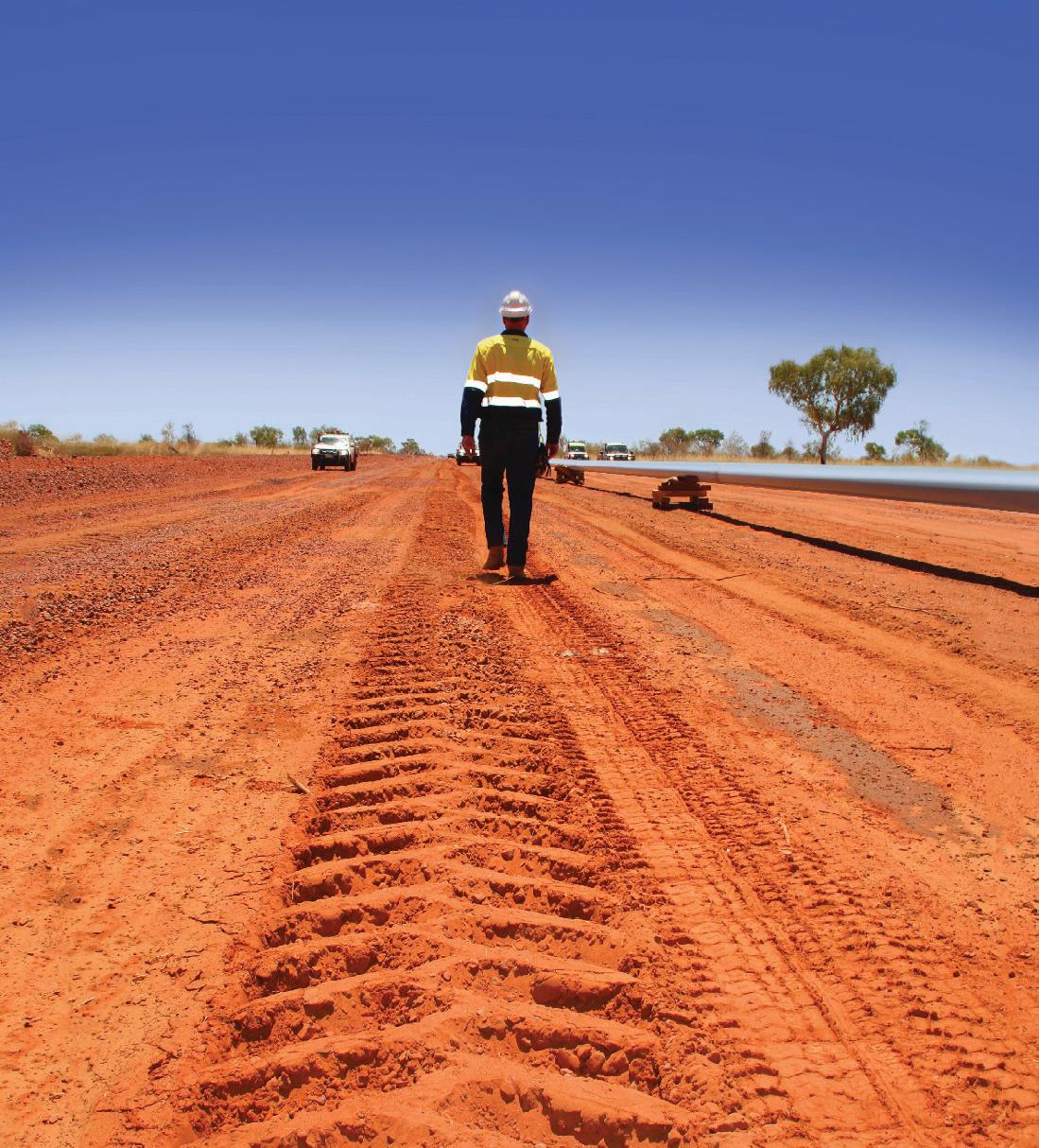
44 March 2021 ISSUE 13 www.energymagazine.com.au DOMESTIC GAS OUTLOOK
The role of gas in Australia’s energy market is a hot topic right now, with the Federal Government throwing its support behind the development of more gas assets. Energy infrastructure company, Jemena, is embarking on two gas pipeline extension projects: the Eastern Gas Pipeline (EGP) extension and the Northern Gas Pipeline (NGP) expansion.
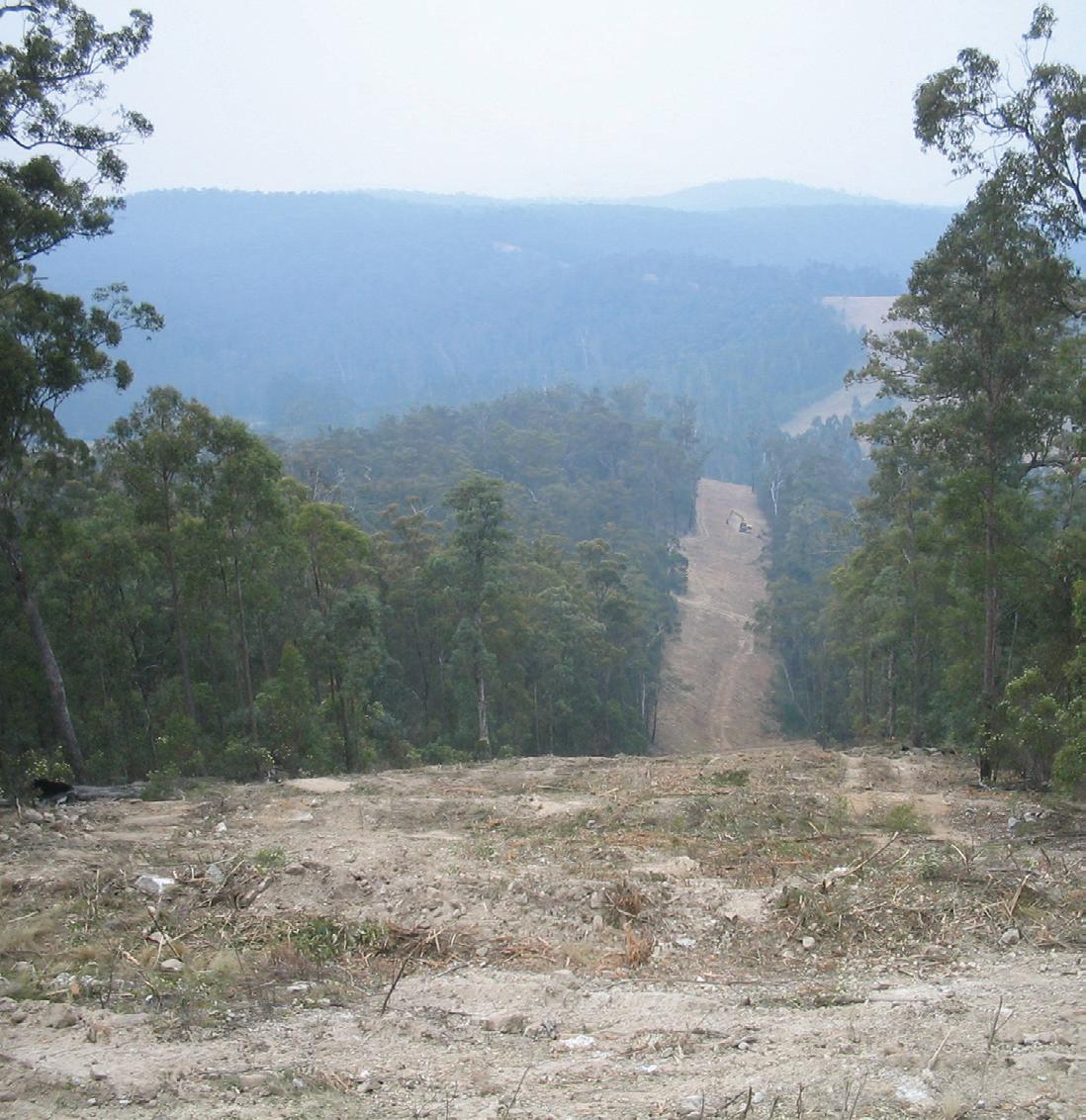
Eastern Gas Pipeline project
In September 2020, Jemena announced it was developing plans to extend its 797km Eastern Gas Pipeline (EGP) by around 185km from Horsley Park in Sydney to the Hunter Valley, helping to further integrate Newcastle and the Central Coast into the east coast gas grid. The project will not only help to connect the Hunter Valley to the domestic gas field, but also connect it to the proposed LNG Port Kembla Gas Terminal (PKGT).
The extension to the EGP is expected to be able to deliver upwards of 300TJ/per day to the Hunter Valley, which can then
be used to generate approximately 1,500MW of electricity. Jemena said it expected to invest over $400 million into the extension project.
In late November 2020, Australian Industrial Energy Pty Ltd (AIE) signed a Memorandum of Understanding (MOU) with Jemena to connect the EGP with the proposed PKGT, which is on the Government’s Priority Project List.
The project will involve the construction of a 12km underground pipeline that will be able to transfer gas directly from the PKGT into the EGP.
45 www.energymagazine.com.au March 2021 ISSUE 13 DOMESTIC GAS OUTLOOK

Jemena also plans to invest over $70 million to modify the EGP and construct a separate connecting bilateral pipeline which will enable 200TJ of gas to be delivered from NSW to the Victorian market, in addition to being able to supply up to 450TJ of gas to NSW per day (equal to a 25 per cent increase on current capacity).
Northern Gas Pipeline project
In November 2020, Jemena announced that it signed a Memorandum of Understanding with Tamboran Resources Limited, which holds 25 per cent of Santos’ exploration venture for the Beetaloo Basin, and subsequently acquired 100 per cent of Sweetpea’s Beetaloo acreage. This MOU is the next step in the proposed $5 billion+ expansion of Jemena’s Northern Gas Pipeline (NGP), with plans to progressively increase the NGP’s capacity from around 90TJ of gas per day to 1,000TJ through a combination of compression and looping.
Following this, the NGP will be connected to the proposed Galilee Gas Pipeline, which will span around 585km and will transport gas from Galilee Energy’s Glenaras Gas Project near Longreach in the Galilee Basin to the Wallumbilla Gas Hub.
Jemena said that it expects to be able to transport up to 200TJ of gas per day via the NGP from 2025, with transport quantities increasing as pipelines are extended and expanded from the second half of the 2020s.
Expansion helps grow the Australian gas market and economy
Jemena’s Managing Director, Frank Tudor, said that the extension and connection of the EGP to the PKGT would have positive benefits for the Victorian and New South Wales gas markets, allowing for greater flexibility, while also placing downward pressure on prices.
“Our plans to invest in gas infrastructure across the country’s north and south are part of a long-term strategy to shore up Australia’s gas markets by bringing much-needed – internationally competitively priced – additional gas to market,” said Mr Tudor.
“We have advanced plans to connect the proposed LNG import terminal at Port Kembla to the Eastern Gas Pipeline, while also making the EGP bi-directional. Together, these plans will enable us to flexibly deliver gas to both the Victorian and New South Wales markets in response to shifting demand profiles.
“It will also facilitate new gas coming to market to offset declining supply from gas fields off the Victorian coast, while also connecting east coast supply to global LNG pricing, noting that gas imports are cheaper in the Australian winter because it corresponds to the northern hemisphere summer, which is traditionally the low demand season for LNG.
Mr Tudor said that Jemena anticipates it will be able to transport additional gas supplies across the NGP from 2025 onwards with construction of the extension to commence approximately 18 months before this anticipated timeframe. Additionally, Jemena anticipates commencing work to connect the EGP to the PKGT later in 2021.
Supporting the Federal Government
In addition to helping bring new gas to market and putting pressure on prices, Jemena’s Eastern Gas Pipeline and Northern Gas Pipeline projects help to support the Federal Government’s gas-fired pandemic recovery.
In September last year, the Federal Government announced details of its gas-fired recovery in response to the COVID-19 pandemic. As part of that plan, the Government announced plans to develop five strategic gas basins, including the Beetaloo Basin.
46 March 2021 ISSUE 13 www.energymagazine.com.au DOMESTIC GAS OUTLOOK

“We see the expansion and extension of the NGP as a crucial step in providing a pathway to market for gas from the Beetaloo Basin, which in-turn will help deliver on the Government’s gasfired recovery plans. In keeping with this, in November 2020 we announced details of a Memorandum of Understanding with Tamboran Resources Limited, the holder of premium acreage in the Beetaloo Basin.”
The partnership between Jemena and Tamboran highlights the importance of collaboration in the industry and represents a key milestone in Tamboran’s goal to bring new supplies of natural gas to eastern Australia by 2023-24 and creates a pathway for the other Beetaloo producers to cost effectively transport their gas.
Infrastructure for a post-COVID world
Jemena’s aim with these projects is to build infrastructure that will be able to support and assist in delivering the gas-fired recovery plan. Jemena considers that gas will have a crucial role to play as a key part of the changing energy system as the economy moves to meet global targets on decarbonisation, playing a key role in firming and energy security, and as a feedstock and energy source to the manufacturing industry.
“Our aim is to build the right infrastructure solutions so that we can deliver on the government’s ambitions as part of a gas-led recovery from COVID-19, while also addressing the growing demand for energy on the global scale,” Mr Tudor said.
“We consider that there are three, potentially four, gas markets in Australia: northern, southern, western, and an export market. While these markets are capable of acting independently, the northern and southern markets are loosely connected.
“The infrastructure solutions we are proposing are in response to declining supply across those markets, particularly the northern and southern markets, and we believe our projects are the best way of bringing new gas to market quickly, efficiently, and economically.”

47 www.energymagazine.com.au March 2021 ISSUE 13 DOMESTIC GAS OUTLOOK
HIGHS AND LOWS: WESTERN AUSTRALIA’S TEN-YEAR GAS OUTLOOK
By Imogen Hartmann, Assistant Editor, Energy magazine

48 March 2021 ISSUE 13 www.energymagazine.com.au DOMESTIC GAS OUTLOOK
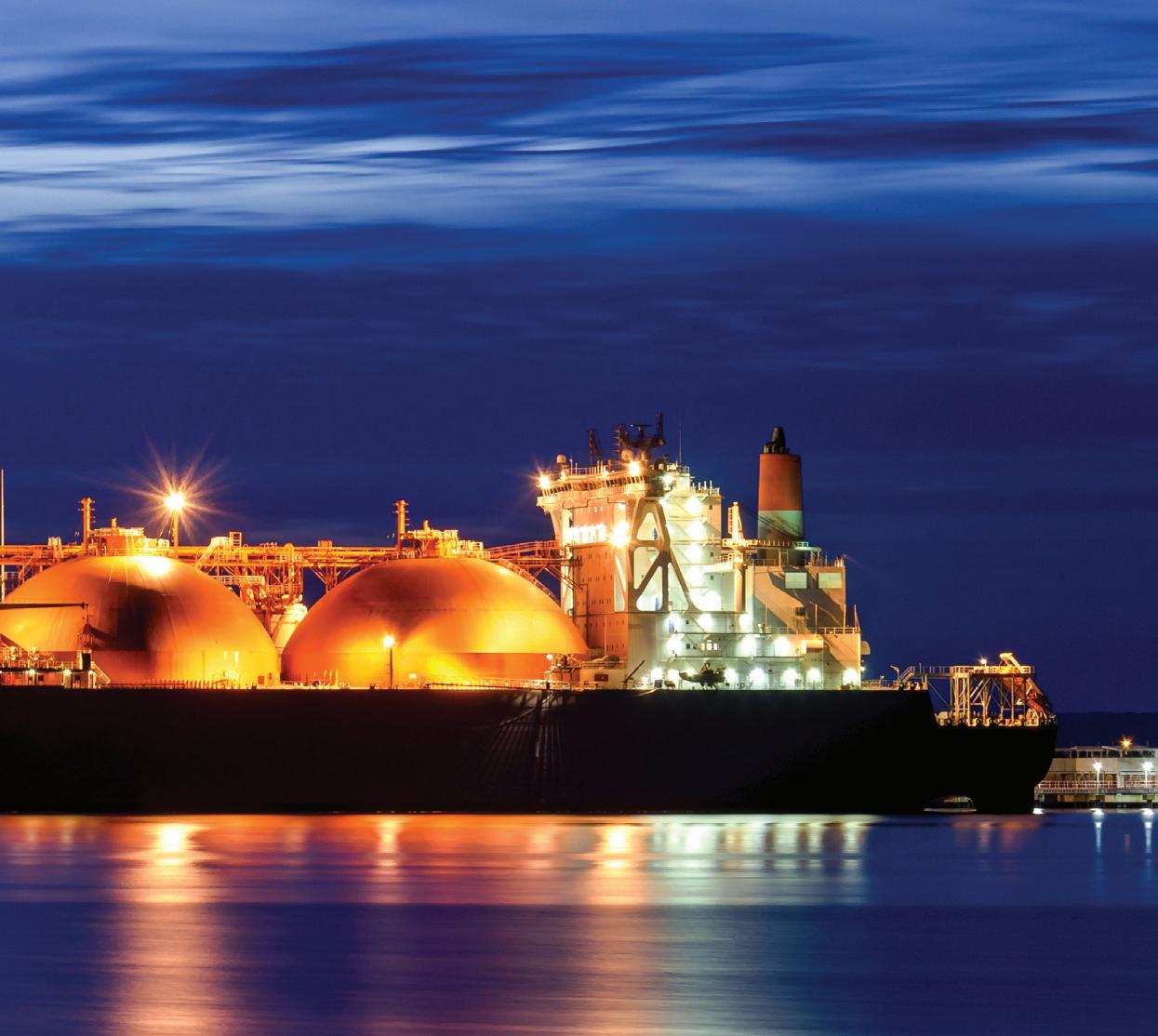
WA’s Carnavon Basin and North West Shelf provide about 90 per cent of Australia’s overall recoverable reserves of conventional gas. WA’s LNG export industry and domestic gas market are heavily supported by these gas fields.
49 www.energymagazine.com.au March 2021 ISSUE 13 DOMESTIC GAS OUTLOOK
The Australian Energy Market Operator has published the 2020 Western Australia Gas Statement of Opportunities, a ten-year forecast of Western Australia’s domestic gas market from 2021-2030. The report also examines current and prospective gas infrastructure, and identifies emerging issues within the industry.
The report outlines the critical role gas will play in Western Australia’s economic recovery from the COVID-19 pandemic, with the state in a prime position to leverage its natural resources.
While the demand forecast is set to exceed the supply potential towards the end of the ten-year period, the report notes that options are available to neutralise the gap. The COVID-19 pandemic has had some positive effects on the industry, with other Western Australian commodities, such as gold and iron ore, experiencing an increase in demand, and will likely be able to offset domestic gas demand in the short term to 2022.
Demand rises, supply to fall
The report indicates that the gas market will be well-supplied until 2026, and narrowly balanced until 2028. There is a potential supply gap in the years following, although the Australian Energy Market Operator (AEMO) notes that undeveloped gas fields not included in the forecast could alleviate the gap and cater to the domestic gas market.
Potential gas supply is expected to fall at an average annual rate of 2.8 per cent over the ten-year period. The decline is attributed to delays in large liquefied natural gas (LNG) projects, as well as the Browse and Scarborough projects, caused by changing market dynamics and COVID-driven economic conditions.
On the other hand, since the publication of the 2019 Western Australia Gas Statement of Opportunities (WA GSOO), domesticonly projects, including backfill for existing production facilities, have seen progress.
In contrast to declining supply figures, the demand for gas is forecast to see an average annual growth rate of 0.7 per cent, predominantly from growth in the mining and minerals processing sectors. From 2023, an extra 40TJ/day is expected to be added from five committed resources projects.
The mining sector is expected to grow at an average annual rate of 1.6 per cent over the ten-year outlook period.
A balancing act
The 2020 WA GSOO forecasts were developed using three scenarios: low, base and high. These scenarios take into account broad outlooks regarding the economy, commodity production, gas prices and population growth.
In all three scenarios, five confirmed mining and mineral processing projects are assumed that contribute substantially to the gas demand over the outlook period.
These five projects are:
» Albemarle Corporation’s Kemerton lithium processing plant, commencing operation in 2021
» Rio Tinto’s Gudai-Darri iron ore project, planned for early 2022 (although a 34MW PV solar farm set to be installed in 2021 is expected to offset part of this project’s gas demand)
» FMG Magnetite and Formosa Steel IB’s Iron Bridge magnetite processing project (stage 2), due to commence in mid-2022
» Capricorn Metal’s Karlawinda Mine, set to become operational in 2021
» Kalium Lakes Beyondie Sulphate of Potash (SOP) project, on target to begin production in 2021
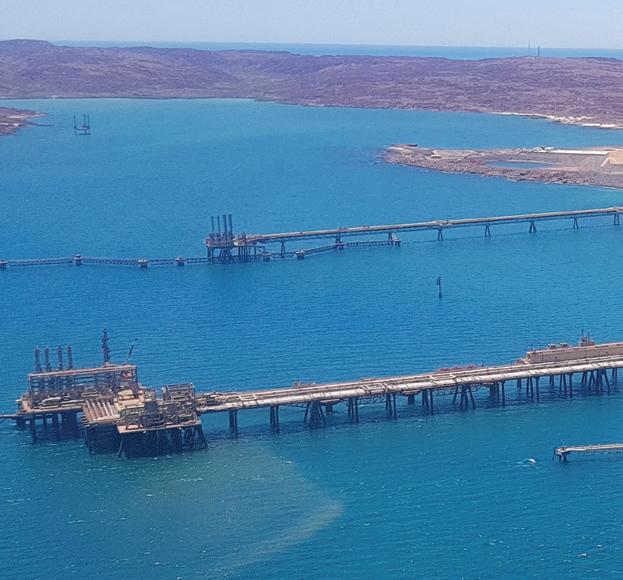
It is also forecasted that Goldfield’s Agnew Gold Mine renewable power project, and Hazer Group’s biogas and hydrogen graphite project, will partially offset the demand from the above projects.
Developing gas reserves is critical for maintaining supply to the WA domestic market. According to the report, the number of exploration and development wells drilled remains relatively low. Only ten wells were drilled over the January 2020 to October 2020 period – a number only marginally higher than the lowest recorded number of drills (nine) in 2017.
Although the 2019 WA GSOO predicted sufficient gas supply to meet gas demand for the 2020 to 2029 outlook period, the latest report forecasts gas demand exceeding potential supply by around four per cent (47TJ/day) in 2029, increasing to around nine per cent (97TJ/day) in 2030.
In the report, AEMO states that options are on hand to minimise the potential supply gap in the later years of the outlook period.
These options may include:
» There is potential to utilise excess reserves at existing production facilities (collected from 2021 to 2026) to meet demand
» To eradicate short-term supply gaps, gas could be taken out from storage at a rate of up to 210TJ/day
» Currently undeveloped gas fields, particularly those that might be connected to existing gas production facilities, could be developed
» There may be additional supply projects entering the market that were not accounted for in the potential gas supply forecasts of this report
Hydrogen has not yet been included in the 2020 WA WSOO demand forecasts (with the exception of Hazer Group Limited’s biogas to hydrogen project).
The impact of hydrogen and renewable energy
Hydrogen gas developments and renewable energy projects are expected to have an impact on gas demand, with several major projects lined up for the outlook period.
As part of its Renewable Hydrogen Strategy, the WA Government is funding seven renewable hydrogen feasibility studies including assessing solar hydrogen for waste collection and light vehicle fleets, a hydrogen refuelling hub, and the potential for an electrolysis hydrogen production plant.
Other hydrogen projects with the potential to impact domestic gas demand include; BP’s Geraldton Export-Scale Renewable Investment Feasibility Study; Horizon Power’s Denham hydrogen demonstration project; Infinite Blue Energy’s Arrowsmith Hydrogen
50
March 2021 ISSUE 13 www.energymagazine.com.au DOMESTIC GAS OUTLOOK

Project; Woodside and APA Group’s Badgingarra Renewable Hydrogen Project; and The Yara Pilbara Renewable Ammonia Feasibility Study.
The WA Environmental Protection Authority (EPA) has also greenlit the first stage of NW Interconnected Power’s Asian Renewable Energy Hub – featuring 15,000MW of new wind and solar power in the Pilbara region, the bulk of which will be used for large-scale hydrogen production for domestic and export markets.
Several renewable energy projects are also in the pipeline, at varying stages of development, including the commissioning of Horizon Power’s Onslow microgrid project, and Gold Fields Group’s 56MW Agnew Hybrid Renewable Project.

WA’s prime position in the gas game
There are a few factors that position WA as a prime producer of natural gas, like the state’s unique geographic isolation and large gas resources.
WA’s Carnavon Basin and North West Shelf (NWS) provide about 90 per cent of Australia’s overall recoverable reserves of conventional gas. WA’s liquefied natural gas (LNG) export industry and domestic gas market are heavily supported by these gas fields. The development of the NWS gas fields was first promoted by the WA Government policy back in the 1980s. The NWS partners
signed a significant gas supply contract with the State Energy Commission of WA and built the Dampier to Bunbury Natural Gas Pipeline (DBNGP).
WA has the largest natural gas consumption of all Australian states, in spite of its relatively small population. In 2018-19 WA consumed 669PJ of gas, which accounts for approximately 42 per cent of the country’s total gas consumption.
WA’s domestic gas market is supported by the State Government’s promotion of long-term supplies of natural gas for WA consumers through its Domestic Gas Reservation Policy. Under the policy, 15 per cent of gas made available through new offshore gas developments are sought for domestic use.
Export gas producers are required to negotiate with the WA Government through the policy, with flexibility built in to allow for each project to be negotiated on a case-by-case basis.
LNG export set backs
As more and more countries commit to reducing greenhouse gases and thereby seeking coal and diesel alternatives, natural gas is becoming more relevant in the world's energy mix.
WA has become a world leader in LNG export, launching an LNG taskforce in 2018, and multiple cross-sector collaborations developing exportable capabilities in new technologies, including remote operations and LNG processing.
The 2020 WA GSOO outlines delays in the large LNG projects which is attributed to weak oil and LNG prices, as well as an LNG oversupply. The report notes that the LNG oversupply has been aggravated by COVID-19 restrictions, which have reduced demand. Other projects have increased in volume or changed development paths.
Modelling of prospective supply sources from the latest report, compared with the 2019 WA GSOO indicates a three year delay of Woodside Energy’s Scarborough LNG project, and the exclusion of Browse LNG project (previously included in supply forecasting) due to timing uncertainty.
AEMO said it would continue to work closely with industry, market bodies and government to enable developments that would secure affordable and reliable energy for consumers state and Australia-wide. With a large volume of undeveloped gas (currently too speculative to include in the 2020 WA GSOO) combined with the strong demand for WA commodities, AEMO assures that there are plenty of options to balance the potential outlook supply gap.
51 DOMESTIC GAS OUTLOOK
www.energymagazine.com.au March 2021 ISSUE 13
Western Australia’s LNG industry continues to provide huge benefits to the state in terms of exports and for domestic supply.
With a large volume of undeveloped gas, AEMO is confident that there are plenty of options to meet the state’s domestic and export gas requirements.
SOWING THE SEEDS TO REAP SMART METER REWARDS
















52 March 2021 ISSUE 13 www.energymagazine.com.au SMART ENERGY



 Iby David Feeney, Executive General Manager, Transmission and Distribution Networks, Australian Energy Market Commission
Iby David Feeney, Executive General Manager, Transmission and Distribution Networks, Australian Energy Market Commission
Smart meters offer so many benefits, but yet the penetration of these devices in Australia – outside of Victoria – is nowhere near as high as it needs to be for these benefits to be realised. In response to this, the Australian Energy Market Commission has commenced a project which will look at what needs to happen to accelerate the take-up of smart meters in Australia.

magine accurate energy bills that allow consumers to respond to market price signals in real time and estimated meter reads a thing of the past.
Consider the impact of clear visibility on how distributed energy resources are operating so their potential can be better harnessed – not only to manage grid operations, but to get better value from the distribution networks that we already have, rather than expensive new investments that we might not need.


And for vulnerable customers, consider the benefits of remote meter reading, enabling more convenient billing cycles, and reducing the scope for bill shock.
Knowledge and understanding of real-time energy use, disaster monitoring, managing the increasing levels of distributed energy in the system and giving consumers more transparency on what they are actually paying – all of these things and much more will be available to us if we can get the right systems and structures in place to allow smart meters to do their “thinking”.
All of this will open the door to faster decarbonisation and metering is a key enabler.
But there are barriers.
The penetration of smart meters in the market is sitting at levels that many believe are way too low to capitalise on their potential benefits. At the AEMC we have embarked on a project to forensically examine what needs to happen to accelerate the take-up of smart meters in Australia.

and pricing to benefit consumers, and give them better information about their energy use.
Metering is important to making the energy transition smoother – and can help us get to where we’re going even faster. So, in this review, we will go wider and consider the entire framework governing metering. And we’re approaching this with a fresh perspective.

We will conduct our metering review over the course of this year, consulting with consumers, industry and governments on challenges and solutions, starting off with a series of workshops to drive the conversation.
The review is timely, as the penetration of solar continues apace. Nearly three million households and small businesses now have solar panels and the rate of increase is speeding up. Between 2014 and 2017 for example, just under 450,000 small-scale properties installed solar panels. Between 2017 and 2020 this had nearly doubled to almost 850,000 properties.
Given that the power system transition has moved into the express lane, our metering review will need to go beyond just looking at the impact of the specific reforms of three years ago.

We’ll be exploring in depth the barriers to smart meter use, the level of benefits consumers are experiencing from smart meters, what sort of services smart meters might be expected to deliver in future – and of course what expectations different groups had around smart meter use and whether those expectations have been met.
We’ll also look at what data should be captured by smart meters and why? Who should be able to access such data and how? And what protections should be in place?

We want to gather as many perspectives as possible in this process, which is why we have planned extensive consultation, starting with, but not limited to, a reference group and public workshops.
The Commission’s close involvement with the Energy Security Board’s two-sided market and data strategy work is also very much connected to the metering question.
A two-sided market, where consumers are active in the market (either themselves or through third parties) and data and energy flows two ways, will need much more granular information to be successful.

In 2017 the AEMC introduced new rules around competition in metering, including transferring responsibilities for metering away from distribution network service providers. The reforms were designed to increase competition, encourage new products, services

The amount of data potentially available to help manage the system and help customers save on energy bills has increased. The Consumer Data Right introduced last year will allow consumers better access to their data from networks and retailers and the ability to share it will be an important addition to the knowledge base. It should commence in energy by the second half of 2022.
But beyond this, as the Energy Security Board points out in its Data Strategy report, there is big promise in big data. Using data science for the purpose of public good research has “endless potential” to give insights previously unavailable. Insights like predicting demand patterns, monitoring retail competition and informing consumer protections to improve affordability. Only a fraction of this data is currently accessible.


The scale of work that needs to be done is immense. It will need constructive and creative thinking, patience and enthusiastic collaboration. At the same time – what an opportunity we all have to make real and lasting change. We hope you’ll join us on the journey.

53 www.energymagazine.com.au March 2021 ISSUE 13 SMART ENERGY
TIME IS RUNNING OUT TO SALVAGE
AUSTRALIA’S EV FUTURE
by Charlie Richardson and Soon Wai Lim, Utilities Practice, Accenture Australia & New Zealand

Australia is currently lagging behind the rest of the world when it comes to electric vehicle adoption, and as a nation of car lovers with abundant sources of renewable energy, there really are no good reasons for this to be the case. Here, we look at why electric vehicle sales haven’t taken off in Australia; and the steps that need to be taken to turn Australia into the electric vehicle powerhouse it should be.
54 March 2021 ISSUE 13 www.energymagazine.com.au SMART ENERGY
In its latest report, The Electric Vehicle Council identified a 200 per cent increase in electric vehicle (EV) sales, compared to a 7.8 per cent reduction in sales of petrol and diesel vehicles. Market signs like these have pointed towards the rise of EVs for some time now, however as looming price parity tips the scales, Australia is underprepared. It’s a surprising position for a country that has the natural resources to lead the development of the technology that is literally driving this evolution – lithium-ion (Li-ion) batteries.
This missed opportunity, coupled with a legacy of underinvestment in EV infrastructure, makes Australia an unattractive prospect for developers, placing us in the position of becoming a scrapyard market for obsolete petrol and diesel vehicles. This should provide timely motivation to salvage the future of Australia’s EV industry.
Fixing the right problems
Global markets outside of Australia have been far more progressive in pursuing the electric vehicle agenda, with Norway and the UK setting the standard for policy and Germany setting the benchmark for manufacturing. Aggressive targets within these markets leave Australia too far behind at this point to become an industry leader. As a secondary market, excess stock of petrol and diesel vehicles will find their way to Australia, at which point the value of these end-of-life assets will be no more than the scrap they’re worth. Unfortunately, given our starting position, this is a near certainty.
The immediate task is identifying and fixing the right problems. Australia’s conversation around EVs inevitably focuses on the same circular topics – range anxiety (the fear that a vehicle will be unable to reach its destination), price parity with petrol and diesel vehicles and charge time. While these are important practicalities, they miss the bigger picture.
The launch of EVs in Australia is going to be led by fleet buyers, not individuals. This is largely due to the price differential for buying and delivering scale to the market.
It’s not just a simple case of exchanging one form of vehicle for another. There is an ecosystem that comes into play. We must urgently plan and execute the installation of chargers and accommodate the infrastructure needs of the vehicles themselves – these have both opportunities and challenges from a technology perspective. There’s also the consideration of vehicle-to-grid energy transference. These bi-directional chargers need to comply with local Australian standards, while building operators need to identify and account for any electrical reticulation work required to tap into vehicle to grid capability. The tech has already been proved in Spain, which makes back some time, but there’s a pressing need to get to grips with it promptly.
In the long term, Australia would benefit hugely from manufacturing its own technology from our abundant resources, including Li-ion batteries, to avoid being at the mercy of global supply and disruptions. This will prove future-crucial when Li-ion batteries overtake oil as the primary means of power.
A significant oversight in Australia’s fledgling EV market, and to be fair, the global market as well, is software technology. Software is inherently vulnerable to security threats and confidence in this technology is a huge factor in moving beyond the basic practical concerns dominating the current conversation. The cyber security aspect of establishing our EV network therefore has to factor into our primary planning, especially at fleet level and the establishment of vehicle-to-grid energy transference. Australia Post’s introduction of its electric trikes, otherwise known as eDVs (electric delivery vehicles) is a good example of the kind of essential fleet services that must protect themselves from disruption.


The route to Australia’s EV future
Australia’s first step of the journey is to establish a roadmap for how its EV future will take shape and start to trial and test essential elements like Lithium-ion manufacturing and energy transference. In some ways, the delayed arrival of EVs to our market affords us an opportunity to learn from the mistakes of markets more advanced than ours.
From a security perspective, the way forward should be familiar, as it follows the same journey as rolling out any new software – starting with extensive penetration testing. Manufacturers will stand by the security of their tech, but without this level of scrutiny, there is no way to ensure the security of the entire network as an ecosystem.
There’s an urgent need to dive into the detail of the Australian market and determine what is needed at a granular level to pair the new tech with our existing infrastructure. If not, we can only expect to be crippled by perpetual delays and a frustrating sense of delivering the impossible. This needs to go hand-in-hand with policy, standards and guidelines, even if they’re borrowed from the more advanced European markets that have done the heavy lifting already.
In terms of industry standards, industry must take the lead. It’s too easy to say that the Federal Government needs to pick up the mantle. Waiting any longer to take action will be detrimental. In the same way that innovation came to the fore during the pandemic and people took charge of finding their own solutions; what’s needed now is a consortium of the tech and design, retail, utilities and automotive industries to establish grassroots standards that suit the nuances of the Australian market, informed more widely by those established in Europe.
Salvaging our EV future
It’s time for Australia to move beyond rudimental considerations like range anxiety. The global industry has evolved past them and the technology is proven and mature. The best the Australian market can hope for as things stand is to become the global scrapyard for obsolete petrol and diesel vehicles. It’s a stark reality, but fixable, and one that should spark imagination and determination to catch up with major international markets and global cities pressing forward with an electrified future for infrastructure and transport.
It’s now up to Australia’s industries to take charge of the situation, rather than waiting on government steer, and evolve the focus towards infrastructure planning and embedded cyber security that safeguards the EV ecosystem. Our slow start provides an opportunity to embrace the progress of other markets and make back lost time, but we can’t wait any longer – the journey starts now.
55 www.energymagazine.com.au March 2021 ISSUE 13 SMART ENERGY
Charlie Richardson. Soon Wai Lim.

GONE WITH THE WIND: HOW WIND POWER HAS AFFECTED ELECTRICITY PRICES AND VOLATILITY
by Eliza Booth, Assistant Editor, Energy Magazine
As Australia’s governments move towards their goal of reaching net zero emissions by 2050, renewable energy is taking an increased role in the National Electricity Market. Variable renewable energy forms, like wind and solar, are especially becoming more prevalent in the market, with wind generated power not only helping to lower Australia’s emissions, but also lower prices as well. However, new research has found that the growth in wind power is also causing price volatility in the National Electricity Market, which presents a real issue for Australia’s hopes of reaching its emissions reductions targets.
56 INDUSTRY INSIGHT
March 2021 ISSUE 13 www.energymagazine.com.au
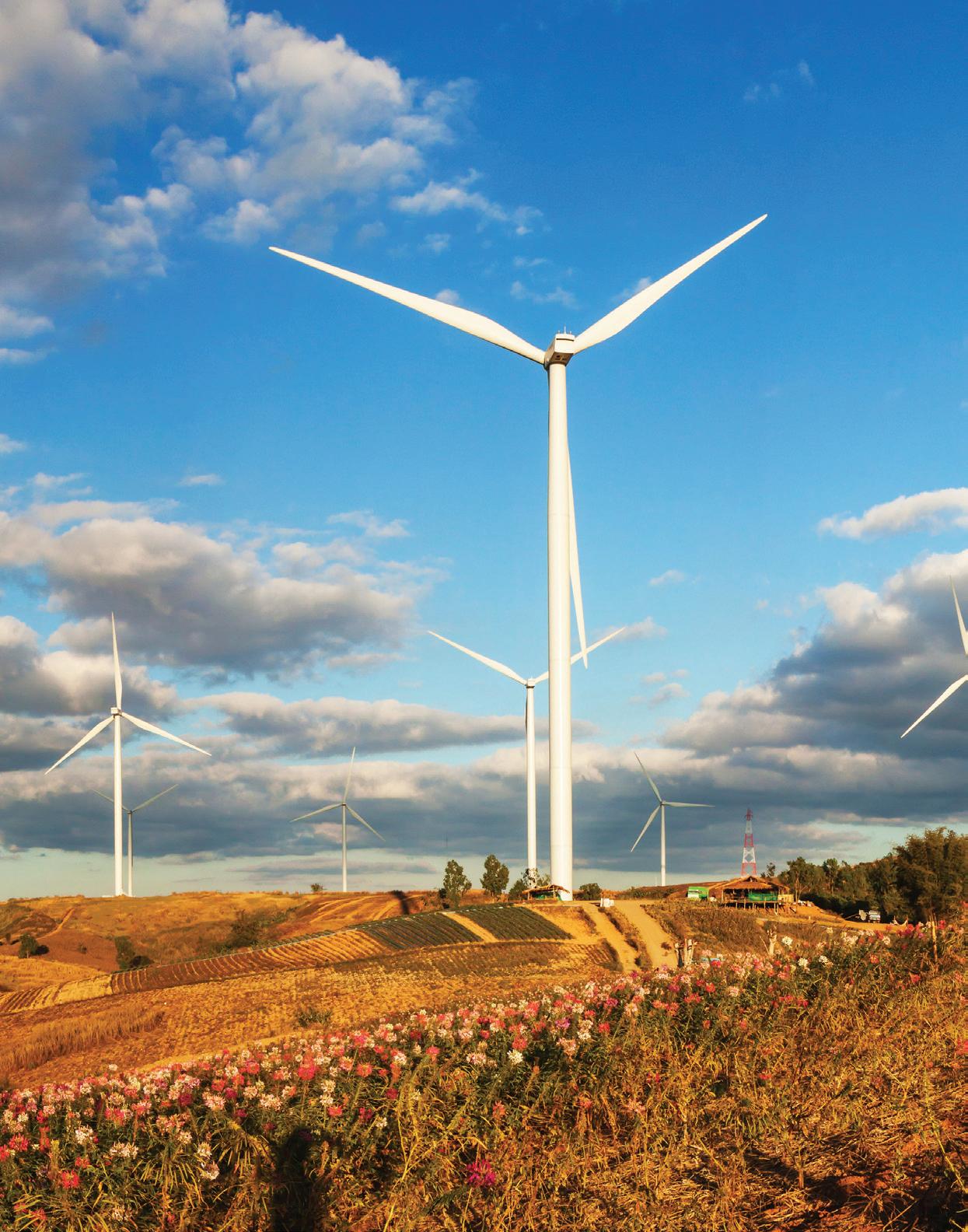
57 INDUSTRY INSIGHT www.energymagazine.com.au March 2021 ISSUE 13

58 March 2021 ISSUE 13 www.energymagazine.com.au INDUSTRY INSIGHT
Muthe Mwampashi from the University of Technology Sydney recently reviewed data from the last decade to examine the effect that wind power has had on prices and price volatility in the National Electricity Market (NEM), published under the title Wind generation and the dynamics of electricity prices in Australia.
For the research, Mr Mwampashi joined with Dr Christina Nikitopoulos and Dr Otto Konstandatos from UTS Business School, and economist Dr Alan Rai, director of investment advisory firm Baringa Partners, with the results of the study producing interesting conclusions on the current role of wind power in Australia's energy market, how it affects prices and what needs to be done to mitigate this volatility to ensure renewable energy has the best chance of success.
The current state of renewables in the NEM
Thanks to its abundant natural resources, ideal weather, government funding and innovations in variable renewable energy (VRE) technology, Australia has become one of the fastest nations in the world in transitioning to renewable energy. In fact, Australia is currently transitioning ten times faster than the global average, making it a leader in renewable innovation¹.
To help the country reach its emissions reduction targets on time, Australia has the Renewable Energy Target (RET) scheme. Two smaller sub-schemes make up the RET, the Small-scale Renewable Energy Scheme (SRES), which supports small-scale renewable generation such as small-scale wind farms and rooftop solar; and the Large-scale Renewable Energy Target (LRET), which supports larger-scale projects like wind or solar farms and hydro plants.
Thanks in part to the RET scheme, wind farms have become particularly prevalent, with our geographic location and weather patterns making the country an ideal place for wind generation. Some of the major wind projects in Australia include: Coopers Gap Wind Farm in Queensland with 453MW capacity, Macarthur Wind Farm in Victoria with 420MW capacity, Snowtown Wind Farm in South Australia with 370MW capacity, Hallett Wind Farm in South Australia with 351MW capacity, and Hornsdale Wind Farm in South Australia with 315MW capacity². South Australia is leading the way in wind generation with 50 per cent wind penetration, which is the highest in the NEM and second to Denmark globally.
Thanks to the development of large-scale projects such as the wind farms outlined above, the LRET reached its target of 33,000GWh (approximately 23.5 per cent) of Australia’s electricity sourced form large renewable projects in 2019 – a year ahead of schedule. This was a fantastic result, and has led to both reduced emissions and lower electricity prices, which is great news for consumers. However, this rapid expansion of VRE in Australia, and the intermittent nature of VRE, has presented a new challenge for the industry: price volatility, which needs to be assessed and managed to ensure prices can stabilise, and the grid remains secure and is able to keep up with demand in peak times.
The impact of wind on the NEM and prices
As part of better understanding how VRE is affecting electricity prices, Mr Mwampashi’s Wind generation and the dynamics of electricity prices in Australia study focused on wind power as the dominant VRE currently in the country, even despite increased solar generation recently. The study looked at how increasing wind generated energy output is affecting wholesale electricity prices and volatility in the NEM, as well as what other factors contributed to the fluctuating prices. Additionally, the study was the first of it’s
kind on the NEM to include the impact of hydro generation and interconnectors, which play a major role in the NEM. Variables such as gas prices and electricity consumption were also considered when undertaking the research for the study.
The study looked at the top four major and mature wind energy markets across Australia (New South Wales, South Australia, Victoria and Tasmania) and used daily data from the NEM from a period of 2011 to 2020 to assess the impact of wind energy on those four markets. It also looked at how the carbon pricing mechanism scheme of 2012, as well as the COVID-19 pandemic, had an effect on electricity prices in the NEM.
The study found that daily electricity prices decreased by up to $1.30 per megawatt hour for every one gigawatt per hour increase in wind generation, however, this also increased price volatility by up to two per cent for South Australia and up to one per cent for Victoria.
In addition, the results of the study found that hydro generation, electricity consumption and gas prices also contributed to determining electricity prices and price volatility. Furthermore, it determined that cross-border interconnectors played a major role in determining electricity prices, which the study noted underscored the importance of investing in better connectivity across the NEM.
As a result, the study concluded that Australian states that had a higher penetration of wind generated energy, like South Australia, Victoria and Tasmania, were more susceptible to price volatility compared to other states.
What needs to be done to ensure NEM and prices can stabilise?
As outlined in the results mentioned above, the study concluded that the rapid evolving generation mix in the NEM, as well as factors like consumption, gas prices, the pandemic and wind penetration, all directly affect electricity prices and, as a result, lead to uncertainty in prices.
The study suggested that these impacts could potentially indicate the need for new investment in fast-start, firm and dispatchable capacity as more variable renewable energy enters the generation mix and as more coal-fired power plants are retired and taken offline. The study suggested states take their lead from states like South Australia and Tasmania, who have larger proportions of hydro and gas generation, which help keep the system stable and secure as more renewable energy is added to the mix.
Furthermore, the study found that Australia’s renewable generation was not as connected as other leading countries like Denmark, instead giving responsibility to each individual state to ensure stability within the NEM. The study suggests that cross-border interconnectors were integral to mitigating the intermittency of variable renewables through the process of pooling and sharing varying generation capacities across states. To achieve this, more investment into crossborder interconnectors needs to be established.
In addition to investing in cross-border connections and backstop generation like hydro and gas, the study said that future developments in pumped hydro and battery storage would play a major role in the future of the NEM, saying that battery storage installations are expected to increase from almost zero at present to around 506GW by 2036-37.
By government and industry coming together to address these challenges through investment, incentives and greater communication and connection, the NEM will be best placed for the future of VRE in Australia and electricity prices will be able to stabilise and remain low, and emissions will be reduced, benefiting consumers across the nation, as well as the climate globally. 1
59 www.energymagazine.com.au March 2021 ISSUE 13 INDUSTRY INSIGHT
University of Technology Sydney, Finance Department, UTS Business School, P.O.Box 123 Broadway NSW 2007, Australia
https://www.nsenergybusiness.com/news/top-five-wind-farms-australia-generating-capacity/
2
VIRTUAL PPAS: THE FUTURE FOR ENERGY TRADING

Electrons move fast, but compared to many other sectors, the energy industry can move extremely slowly. But an innovative new partnership is bringing blockchain technology to the energy market in Australia, establishing the first online marketplace for retail power purchase agreements in Australia – which will allow thousands of customers to sell hundreds of gigawatt hours of power by the end of 2022.
60 CONSUMER AND INDUSTRIAL RETAIL

61 CONSUMER AND INDUSTRIAL RETAIL
The impact of COVID has seen sectors like retail transformed virtually overnight. Digital transformation of energy is underway, but it looks quite different to much of the business world.
Amid the Victorian lockdown last year, energy retailer Mojo Power partnered with WePower to explore the application of blockchain technologies to power purchase agreements in the Australian industry.
Since 2017, WePower has been working with generators, retailers and energy users to quietly re-shape the way energy is traded in Australia.
Since first arriving in Australia, WePower’s technology has been supported by EnergyAustralia’s technology and innovation program, and has been white-labelled into the sales architecture of the Queensland Government’s CleanCo venture.

Now, through the partnership with Mojo Power, WePower is ready to reveal its blockchain technology to the broader market.
“Twelve months ago, when we said ‘blockchain’ people’s eyes would glaze over,” said WePower co-founder and Chief Technology Officer Kaspar Kaarlep. “People in energy often didn’t understand it, and people in tech weren’t excited about it the way they were in 2017. However, when you show them in practice what it can do they get it straight away.”
While some tech evangelists despair when the public falls out of love with their technology, the bottom of the hype cycle is where Mr Kaarlep feels most comfortable.
“When people stop talking nonsense about how a technology can be used, you can actually get down to the real practical applications, and that’s what has happened with blockchain and energy.”
62 March 2021 ISSUE 13 www.energymagazine.com.au CONSUMER AND INDUSTRIAL RETAIL
The practical application that WePower is interested in is the use of the technology to make the large, illiquid and complex power purchase agreements (PPAs) struck between generators and their customers into fungible, tradable commodities. The Ethereum blockchain, on which transactions are recorded, produces a secure, verifiable and unalterable ledger linking each partial or virtual PPA to the original generation source.
WePower has just built the first online marketplace for retail power purchase agreements in Australia. Working with retailer Mojo Power, it will service thousands of SME and C&I customers and sell hundreds of gigawatt hours of power by the end of 2022. Initially the Mojo Marketplace will be selling the offtake from Robinvale Solar Farm, but there are other wholesale PPAs in the pipeline from regional Victoria, New South Wales and Queensland.
The implications of this are profound. It opens avenues to direct energy procurement – whether mediated through a retailer or directly with a generator – to energy users below the C&I level who were otherwise not able meet the expenditure threshold to purchase wholesale PPAs. At a time when renewables are driving the wholesale cost of energy to historic lows, this is an attractive proposition for many energy users.
“We’ve seen huge interest in this from particular sectors,” Mr Kaarlep said. “Local governments are looking to support not just renewable energy, but also local job creation, and this offers them a way to do that. Data centres whose overhead consists largely of energy costs are very interested. Manufacturers and agriculture are other areas where there has been a lot of interest. This technology has taken PPAs well beyond the traditional customers of aluminium refiners, steelmakers and other energy-intensive industrial players.”
Usually when the market is disintermediated like this, incumbent players are the ones who are hurt. And while Mr Kaarlep concedes that not every gentailer is thrilled that the company is here, many retailers, like Mojo, are seeing the value in adopting the technology themselves.

“For decades energy retailers have had an incredibly sophisticated back end to their operation where they managed the performance of a complex portfolio of PPAs, and what can only be described as a very crude front end where they turned on a tap marked energy and electrons came out.
“Retailers are realising that being able to fractionise their power purchase agreements and avail themselves of the customer’s own energy use data to make their product more responsive, more liquid and more transparent is a useful thing to do.”
Retailers who wish to sell verified carbon-neutral energy to their customers can offer what are in effect single-source energy purchases. This lets commercial, industrial and SME customers burnish their sustainability credentials without the need to purchase both energy and carbon offsets. It also offers customers exposure to lower wholesale prices without erasing the retailer’s margin.
Alongside the development of the Mojo Marketplace and whitelabel implementations for other customers, the company is keenly anticipating the introduction of a consumer data right for energy in Australia, with the energy sector identified by the ACCC as one of those in which such a right is most urgently needed.
“Data is the lifeblood of the energy business,” Mr Kaarlep said. “It’s very interesting, because in Europe we saw smart meters rolled out at the same time as in Australia and New Zealand. We are able to work on residential offerings in Europe because customers there have control of their data.
“Here in Australia the regulatory environment hasn’t kept pace with technology, and retailers who want to innovate are constrained from doing so. Ultimately it’s the energy users paying the price.”
63 CONSUMER AND INDUSTRIAL RETAIL www.energymagazine.com.au March 2021 ISSUE 13
64 March 2021 ISSUE 13 www.energymagazine.com.au MAJOR FEATURES Grid integration and stabilisation Disruption Embedded networks Biofuels SPECIAL FOCUS Electric vehicles IoT & cloud communication Demand management EQUIPMENT & MACHINERY Switchgear November 2021 Deadline: 15 October 2021 FEATURES SCHEDULE
AGC Plastics IFC Altra Motion 27 Antai Solar Australia ............................................................................................................................................................. 19 Australian Private Networks ................................................................................................................................................. 37 Australian Radio Towers 24 Energy Networks Australia ................................................................................................................................................. IBC Logsys Power Services ......................................................................................................................................................... 39 Monkey Media 25 Pivotel................................................................................................................................................................................. 13 Power Equipment ................................................................................................................................................................. 7 R&J Batteries 29 ResourceCo ......................................................................................................................................................................... 21 Shell Energy .................................................................................................................................................................... OBC ADVERTISERS’ INDEX MAJOR FEATURES Energy networks Storage and solar Safety and risk management Waste-to-energy SPECIAL FOCUS Automation Asset management Industrial energy EQUIPMENT & MACHINERY Transformers and substations Vegetation management MAJOR FEATURES Solar Domestic gas outlook Hydrogen and future fuels SPECIAL FOCUS Smart networks Consumer and industrial retail Security EQUIPMENT & MACHINERY Spatial & GIS MAJOR FEATURES Wind Nuclear energy Gas pipelines Energy efficiency SPECIAL FOCUS Microgrids Disaster management Distributed generation EQUIPMENT & MACHINERY Asset inspection & drones/UAVs September 2021 Deadline: 23 July 2021 June 2021 Deadline: 23 April 2021 March 2022 Deadline: TBC
FEATURES SCHEDULE
Brisbane Convention & Exhibition Centre
Exhibition and sponsorship opportunities available and selling fast
Go to www.en2021.com.au to find out how you can get involved
early bird closes 172021August Register now
www.EN2021.com.au
RESEARCH PARTNER PRINCIPAL SPONSOR




































































































































































 Iby David Feeney, Executive General Manager, Transmission and Distribution Networks, Australian Energy Market Commission
Iby David Feeney, Executive General Manager, Transmission and Distribution Networks, Australian Energy Market Commission





















